

To See One of Paris’s Top Attractions, Go Underground
In paris, the streets show off domes, spires, and monuments that attract millions of visitors every year. but beneath this architectural splendor, there’s an entire subterranean world..
- Copy Link copied

An estimated 6 million people are buried in the Catacombs—more than the entire population of Paris.
Photo by Skreidzeleu/Shutterstock
The Paris underground has long been romanticized in books and on the screen . (Remember the police chase scene in the Netflix hit Lupin ? ) There’s such mystery and intrigue that certain habitants can’t ignore the siren song luring them to descend into these secret—and illegal—places. The so-called cataphiles notoriously engage in clandestine activities; urban legends abound of underground cinemas, all-hours parties, and galleries tagged with street art . These contemporary explorers aren’t the first. In the 19th century, abandoned tunnels were used as mushroom farms and breweries; during the Second World War, French Resistance fighters hid in a maze of old quarries stretching 200 miles. (The very buildings so admired on the surface of Paris today were built with limestone excavated from these quarries.)
Today, the only legal place to visit this underground realm is the Paris Catacombs, a nearly mile-long stretch in the 14th arrondissement that takes its name from the famous ossuary housed there. The circuit is lined with walls of skulls and bones, the adjacent stone plaques (etched with the names of old cemeteries) indicating the skeletons’ provenance. Scientists estimate that some 6 million Parisians are buried in the Catacombs: more than the current living population of Paris. With over 500,000 annual visitors, it’s a very popular tourist site.
What is the history of the Paris Catacombs?

It all started with a sinkhole. On one ill-fated day back in 1774, a stretch of the former rue d’Enfer (“Hell Street,” near today’s Place Denfert-Rochereau) caved in and swallowed the houses in a billowing cloud of dust. To avoid another catastrophe, King Louis XVI appointed the first ever Inspector of Quarries, who was to explore, excavate, and map the potentially dangerous underground quarry system. Charles-Axel Guillaumot reinforced the galleries and created what historian Graham Robb, in his book Parisians: An Adventure History of Paris , called “the largest architectural ensemble in all of Europe” in the Paris underworld.
At the same time that Guillaumot’s cartographers methodically worked, there was chaos in the market area of Les Halles. The neighboring Cimetière des Innocents—the largest cemetery in the city—was overflowing with decomposing bodies after nine centuries of burials had saturated the graveyard. The king ordered the closure of the city’s unsanitary cemeteries, declaring that new ones should be created outside the city limits. And so Guillaumot proposed the creation of an ossuary within the medieval quarries beneath the old Enfer customs house, at the time located at the Paris periphery.
Thus began the nightly transfer of bones, in candlelit processions led by chanting priests, which required 15 months alone to empty Les Innocents. The human remains from other deconsecrated graveyards were also carried in carts, shrouded in a black veil, to their final resting place in the old quarries. From ground level, they were unceremoniously dropped down a well, resulting in shattered bones and skulls missing mandibles. They were then meticulously arranged in artistic walls of femurs, humeri, and tibias.
Who is buried in the Paris Catacombs?
The creation of the ossuary wasn’t only about sanitation and public health. It also reflected changing cultural practices and philosophical perspectives. “During this age of Enlightenment, the idea of death was pushed from people’s thoughts and views, literally put underground,” says Hélène Furminieux, the director of communications at the Catacombs. Since the Middle Ages, devoutly Catholic Parisians had thought of life as merely a transitive passage before the afterlife. Funerary rites echoed this in their anonymity (there were no individual names on tombstones; mass graves were often used). Despite this fact, historians have still been able to name individuals buried in the Catacombs by studying parish archives.
As a result, we know that nobles like Jean-Baptiste Colbert and Madame de Pompadour, the favorite mistress of King Louis XV, are buried next to le petit peuple . The bones of such famed writers as François Rabelais, Jean Racine, and Jean de La Fontaine mingle with those of the sculptor François Girardon and Louis XIV’s architect Jules Hardouin-Mansart. And following the French Revolution, both the guillotined victims and their executioners (like statesman Maximilien Robespierre, the infamous architect of the Reign of Terror) now lie together in eternity. One of the largest necropolises in the world, the Paris Catacombs thus represents a massive mélange of humanity, regardless of class or birthright.
Why are the Paris Catacombs famous?

The Catacombs are built in the underground quarries of Paris.
Photo by Heracles Kritikos
Underground tourism began in 1809 when Louis-Étienne Héricart de Thury, the subsequent Inspector of Quarries, redesigned the ossuary to receive visitors. Not meant to be macabre nor ghoulish, the circuit was a contemplative meditation on death, the walls engraved with thought-provoking poetry by the likes of Lamartine and Horace. The entrance to the ossuary itself is inscribed with the words: “Arrête! C’est ici l’empire de la mort.” (“Halt! This is the empire of death.”) Taking inspiration from ancient Rome, the Catacombs features classical references and Doric columns. The site was so popular it attracted famous visitors like Emperor Francis I of Austria in 1814 and Napoleon III in 1860, and concerts have even been staged there.
The ossuary itself is 800 meters of the circuit. As you walk, you can see the markings of a medieval mason’s chisel, engraved inscriptions of the street names above, the initials of the various Inspectors of Quarries who have verified the strength of walls. (The most recent is beneath the exit pavilion’s boutique, which was unveiled in 2017 as part of a massive renovation of the site.)
The coolest part of all? The black painted line on the ceiling that Furminieux calls “Ariadne’s thread.” Before electricity was installed in the Catacombs in 1972, visitors were equipped only with a candle, often getting lost at intersections. To find their way out of the labyrinth, they could follow the black line. Even today there’s a labyrinthine feel to the Catacombs, with twists and turns sometimes dead-ending into doors or locked iron gates.
It’s a sensory experience: You can hear dripping water, the wind from a ventilation fan, the rumbling of the RER train. And if you look closely at the stone walls, you’ll encounter marine fossils embedded in the rock, a testament to the period 45 million years ago when Paris was covered by a tropical sea—the enormity of geological time dwarfing the brief lives of the humans whose skeletons adorn the Catacombs.
How to visit the Paris Catacombs

The catacombs of Paris are old limestone mines—the materials were used to create some of Paris’ most iconic buildings above ground.
Photo by Alex Guevara/Shutterstock
The full-rate ticket price is 29 euros (around US$32), with last-minute tickets priced at 15 euros (about US$17). Tickets for children age 5–17 years are 5 euros (US$6), but keep in mind that the ossuary may not be appropriate for young children. With narrow passageways and stairs, this site is not wheelchair accessible.
The visit is one hour and the temperature is 57 degrees Fahrenheit year-round, so dress appropriately with footwear meant for walking. (Book a guided tour via the group booking form on the website and you’ll be privy to parts of the Catacombs that are usually off limits to other visitors.) These include the replica of a Roman tomb where Catholic mass was once celebrated, a well of turquoise water, and stunning sculptures carved into a wall by a quarry worker depicting the Menorca fortress where he was kept prisoner as a soldier in the army of Louis XV.
A notorious line used to wrap around the custom house for visitors waiting their turn to descend the 130 steps into the darkness. This is no longer the case. When Paris cultural sites reopened after the pandemic lockdown, new health restrictions were imposed requiring reservations to be made online in advance for a particular hour. “As a result, the visitor experience is streamlined and more fluid,” Furminieux says.
Last but not least: The ossuary is a place of repose for centuries of deceased Parisians, and it’s important to visit with respect. There have been stories of badly behaved tourists stealing bones; sometimes they’ve been mailed back, along with letters of remorse. Bags are thus searched at the exit.
See more information on how to visit the Paris Catacombs .
>> Next: AFAR’s Guide to Paris

Get our tips in your inbox! Sign up
Travel France Blog
All You Need to Visit France
Visit the Catacombs of Paris, Complete Guide
The catacombs of Paris, which contain the remains of more than six million people, are one of the great attractions to visit in the French capital. So, because we know you would like to see them, we bring you a guide for your visit to the catacombs of Paris.
We tell you everything you must see inside, how much it costs to get in, and the best tips to prepare your visit .
- How many days do you need to visit Paris
- 7 Day Itinerary in Paris
Why Were the Catacombs Built?
In the 18th century, life in Paris was not exactly synonymous with the elegance with which we identify the city today. The catacombs were created at the end of that century to solve the growing public health problem facing the city.
Before their construction, urban cemeteries were overcrowded and the lack of burial space led to the spread of deadly diseases.
The authorities of the time decided to move the human remains to the ancient limestone quarries beneath the city that had been exploited during Roman times, creating a large subway labyrinth of tunnels and passageways.
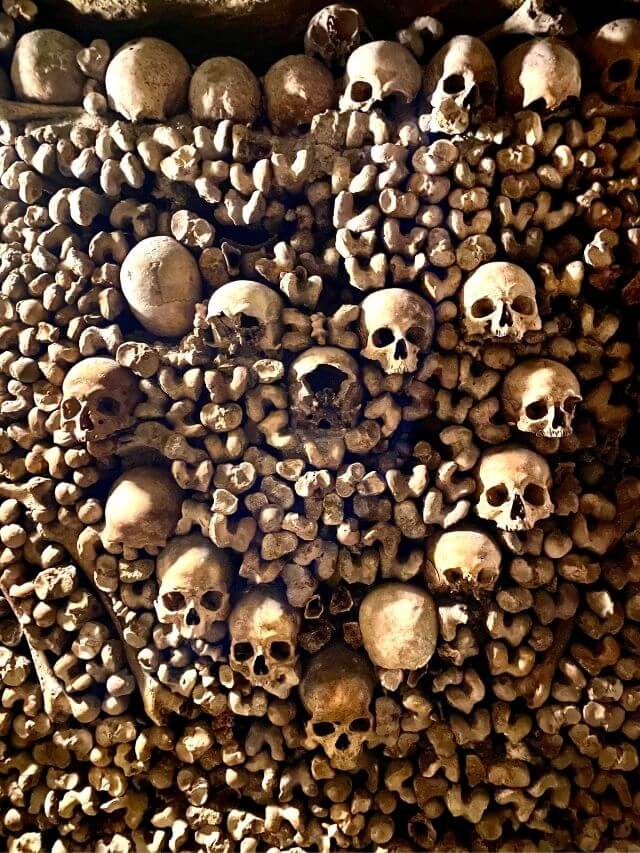
What to See in the Paris Catacombs
Now we tell you what the most interesting points to see inside the catacombs of Paris are.
The Sign Arrête, c’est ici l’empire de la Mort
“Arrête, c’est ici l’empire de la mort” is an inscription in French meaning “Stop, here begins the empire of death”.
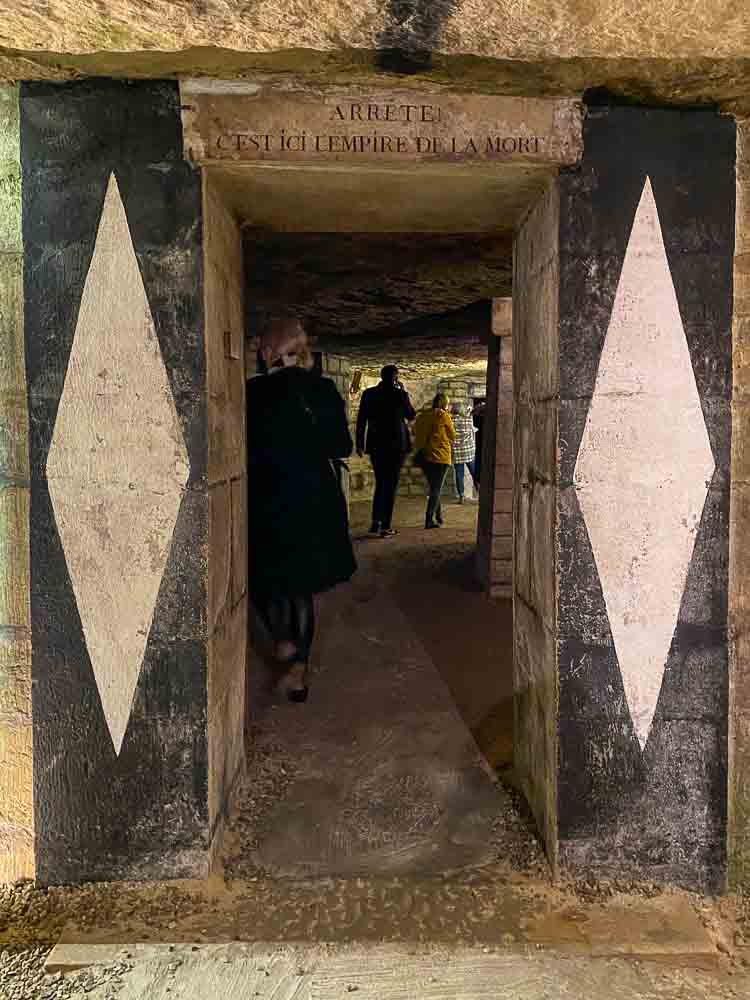
It might be a warning seen in a horror movie, but it is one of the most famous and chilling phrases found in the catacombs of Paris and is the entry point to the labyrinth of bones.
The phrase is a symbolic warning of the power of death and the inevitability of our own mortality.
Viewing this inscription is an unsettling but fascinating experience and is a unique opportunity to reflect on life and death in a place full of history and meaning.
I bought a souvenir magnet with this phrase.
The Port of Mahón
Inside the catacombs some works of art surprise you, this is an example. It is a very detailed sculpture that is a replica of the port of Mahon which is located on the island of Menorca .
The sculpture was made in the 18th century by a stonemason named Décure, who was inspired by the fortification of the city of Mahón to create this impressive piece of art.
The sculpture is located at the entrance to the catacombs and is an example of the ingenuity and creativity of the artists of the time.
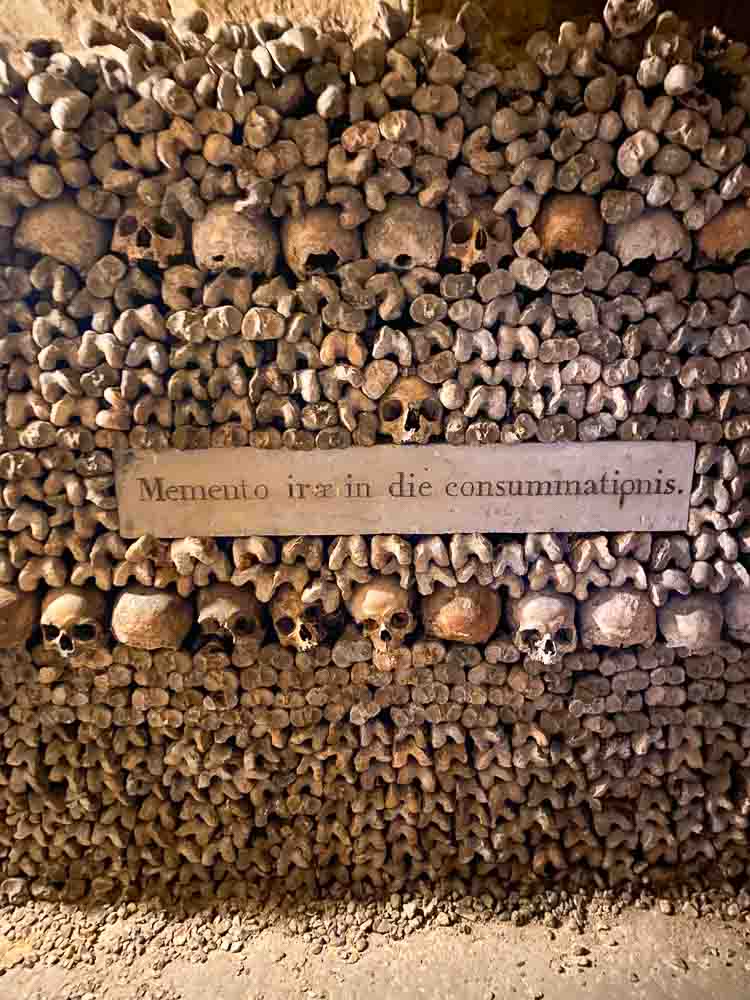
La Senda del Cantero
The Senda del Cantero is a must-see for those interested in history and architecture.
Located in the catacombs of Paris, this route takes you through a labyrinth of subway tunnels and ancient quarries that were used to build some of the city’s most emblematic buildings.
Along the route, you can see the marks and tools used by stonemasons centuries ago to shape the stone, as well as some fascinating archaeological remains. In addition, the Path of the Stonemason allows you to explore a different side of Paris, beyond the typical tourist attractions.
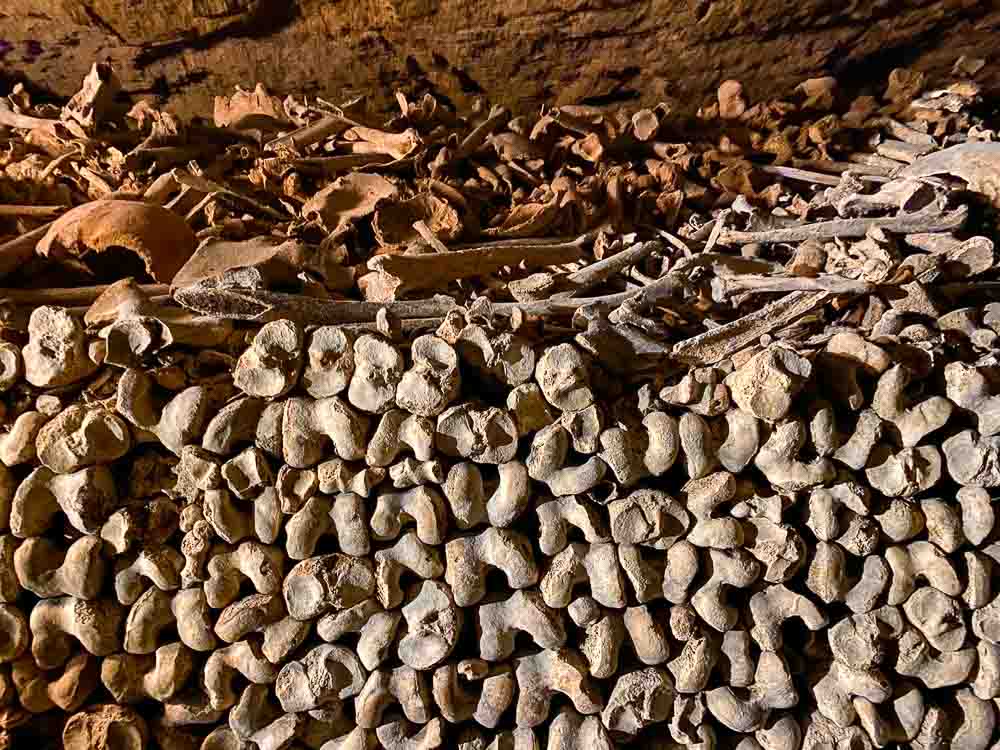
The Spiral Staircase to the Well
Entering the catacombs already makes you feel that you are in a place where you should not enter.
To get to see the millions of bones that live underneath the city, you have to descend a narrow spiral staircase, which with its 131 steps can make you a little dizzy, and when you look at it from the top it seems endless.
This stone staircase was built in 1785 to allow visitors access to the catacombs, and today is a symbol of that construction.
You may be interested in the following:
- Practical tips for traveling to Paris for the first time
- Best places to stay overlooking the Eiffel Tower
The Barrel of Passion
It is also known as the Barrel of Bones and is inside the Crypt of the Passion. And thanks to its enormous size, with more than 2 meters high, it became one of the main attractions inside the catacombs of Paris .
It consists entirely of skulls and bones and has a symmetrical shape reminiscent of a barrel, hence its name. In spite of being gloomy, it has a decorative purpose since it covers one of the pillars on which the catacombs are built.
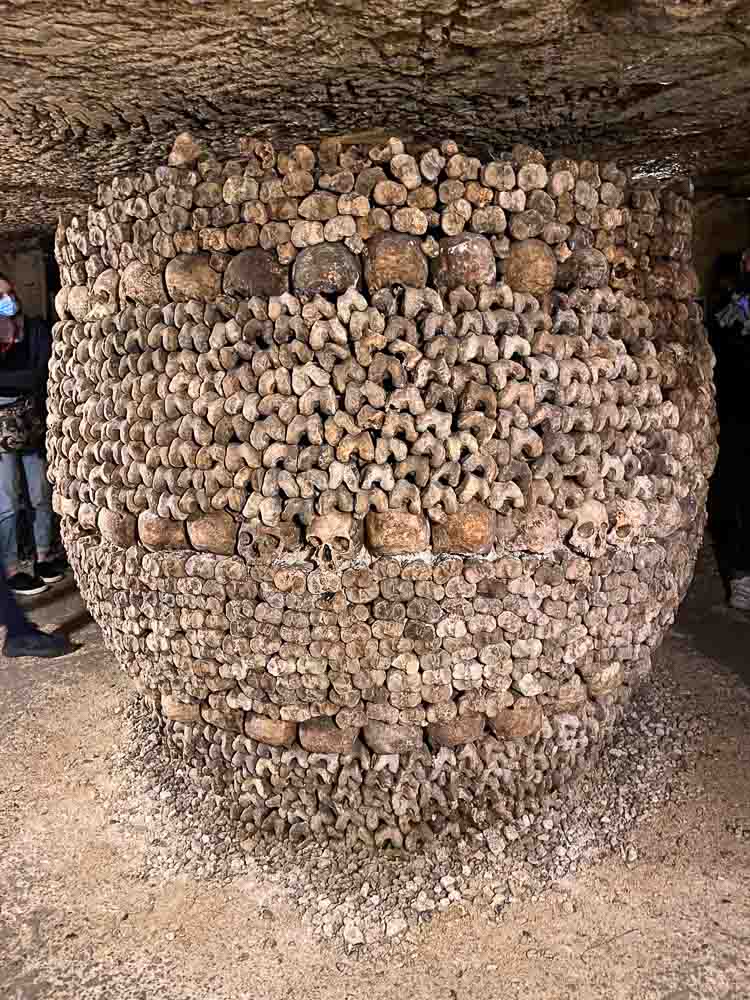
The Same Subway Paris Street Signs
Inside the catacombs of Paris, you will find signs indicating the names of the streets directly above you.
These signs are a fascinating example of how the catacombs can be used as a tool to understand the geography of the city of Paris. Some of the streets you will find on the signs include Rue de la Tombe-Issoire, Rue Saint-Jacques and Rue de la Glacière.
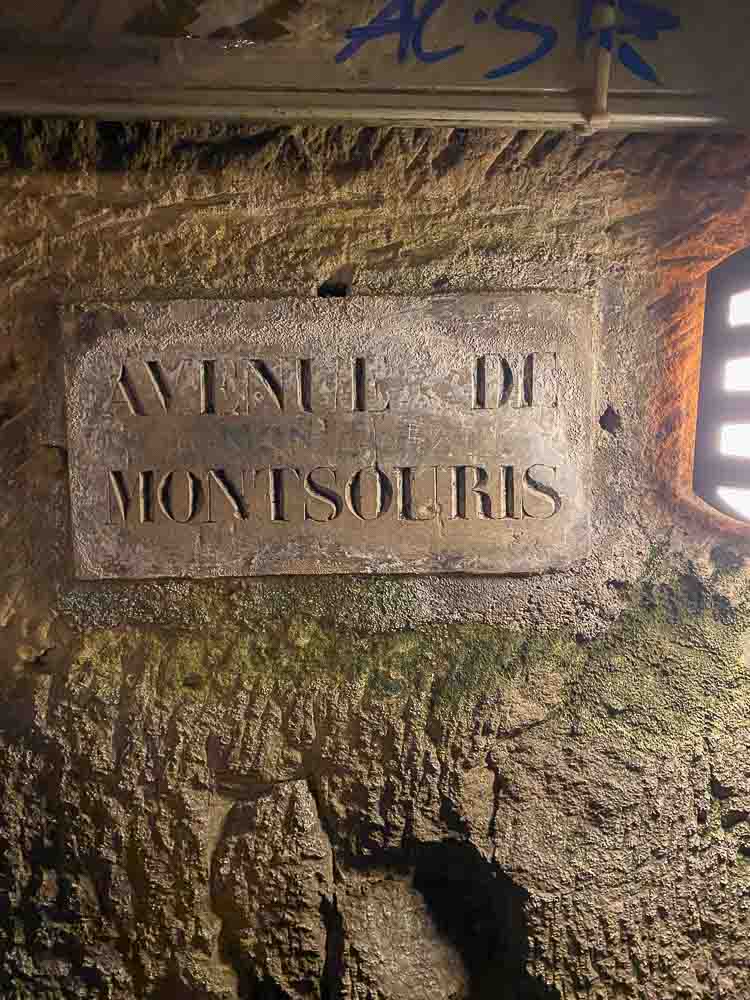
Some of the signs were installed by Guillaumot, who was an architect appointed by King Louis XVI in 1777 as the first Inspector General of Quarries in Paris, and who was in charge of exploring, mapping and, above all, stabilizing them.
His work in the subway world of the city was so good, that he became known as the Savior of Paris.
Famous People Buried in the Catacombs of Paris
As we already told you, in the catacombs of Paris are the remains of more than six million people, and as the French Revolution was a rather violent time, many of the men and women who stood out at that time are buried in the catacombs.
Some notable French history characters are Nicolas Flamel and his wife Pernelle, Blaise Pascal, Montesquieu, Colbert, Marat, Charlotte Corday, Robespierre and Danton , and many more.
As the bones were deposited in a disorderly manner and as a skull can be quite far from the body that held it in life, it is impossible to identify each person, but thanks to different records, it is known that these characters are there.

What to Expect When Visiting the Catacombs
If you are visiting Paris for the first time , one of the most interesting and mysterious attractions are the catacombs.
You will descend a spiral staircase into the city’s depths, where you will encounter galleries of dark tunnels filled with human bones and skulls.
It is an unsettling and awe-inspiring experience, but also fascinating and unique in its kind, as it is not possible to do this type of tourism in many places in the world.
The walls of the tunnels are covered with inscriptions and artwork dating back centuries, giving you an insight into the history and culture of the city.
If you dare to explore this mysterious underworld, we assure you that you will not be disappointed.
And if you like this kind of attraction, you will surely enjoy the free walking tour of the mysteries and legends of Paris .
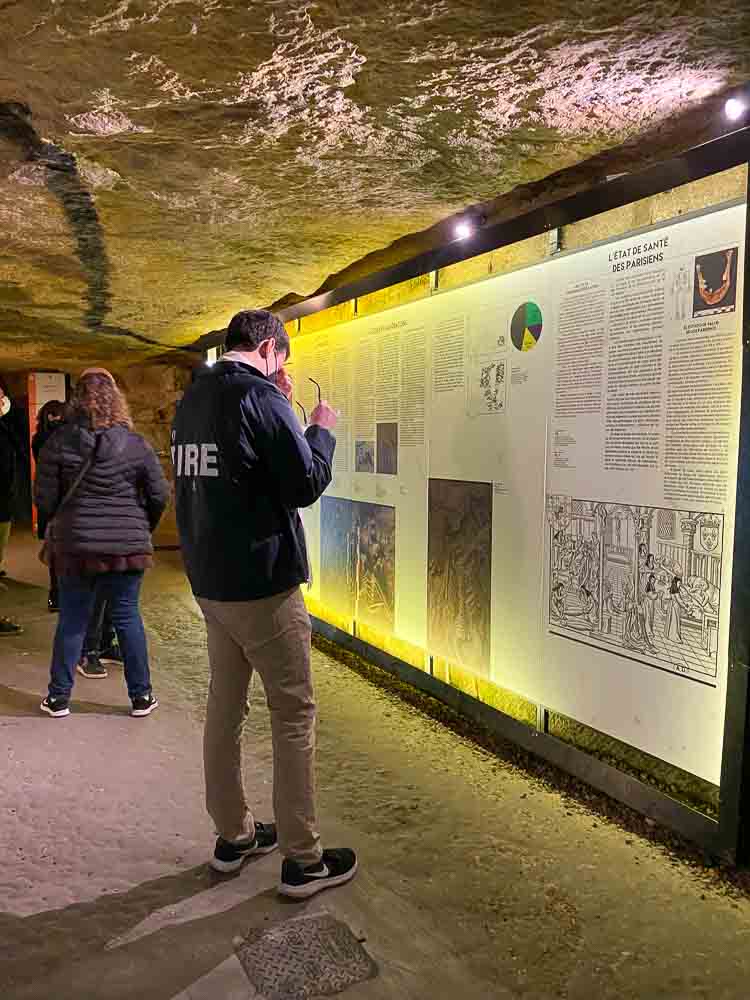
Ticket Prices for the Paris Catacombs
There are different ways to buy tickets; you can do it through their website , where it costs 29€ or you can buy them through civitatis.
But there is a cheaper way to enter the catacombs. Do you want to know what it is? So, read on.
Tips for Planning a Visit to the Catacombs of Paris
The cheapest way to visit the catacombs of paris.
The cheapest way to visit the catacombs is to buy last-minute tickets. How? The company that operates the catacombs offers tickets at 18€.
You have to check on their website and be on the lookout for a time slot that has places available.
How to Dress for the Catacombs
You have to consider that it is a subway place, where the average temperature is 14° and it is quite humid, so you have to be warm. And if you go in winter, keep warm so as not to suffer while waiting outside.
It Can Be a Bit Tiring
You don’t need to be very fit; it is a quiet walk, a total of 1.5 kilometers and the tour lasts 1 hour. But it can be tiring because you have to go down 131 steps to get in and then to get out you have to climb 112 steps.
Do Not carry Luggage
Do not go with large bags or backpacks, because they will not let you pass and they have nowhere to leave them.
- Related: What to bring on your trip to Paris according to the SEASON
Best Time to Visit the Catacombs of Paris
We believe the best time to visit the catacombs is during the autumn or winter months, i.e. from September to March.
The main reason is that during the summer months, from June to August, the Paris Catacombs tend to be very crowded due to the large influx of tourists visiting the city.
Lines to enter can be very long, and the interior can be crowded, making the visit less enjoyable.
Accommodations Near Catacombs of Paris
If one of the places you will visit in Paris are the catacombs, you need to know which hotels are nearby. The catacombs are in the Montparnasse district, so you can look for hotels around here .
We bring you these recommendations of accommodations near the Catacombs.
*Disclosure: Price may change by season, booking date, etc.
Drawing House
They are located 1.1 kilometers from the catacombs, so it will take you less than 15 minutes to walk there.
It is a 4-star hotel that has an indoor swimming pool, gym, sauna and terrace. It offers buffet, continental or vegetarian breakfast options. It also has a bar, so you can have a drink and a bite to eat right there if you want.
It is an ideal hotel for art lovers, especially for painting.
The double room starts at 274€.

Hôtel du Maine
This hotel has less original decoration than the previous one, but it is still beautiful.
It also has a restaurant offering some light dishes and a bar with a good variety of drinks. The hotel offers a buffet breakfast every morning.
The hotel is less than 900 meters from the catacombs, so you can connect both places with a 10-minute walk.
Double rooms start at 197€ .
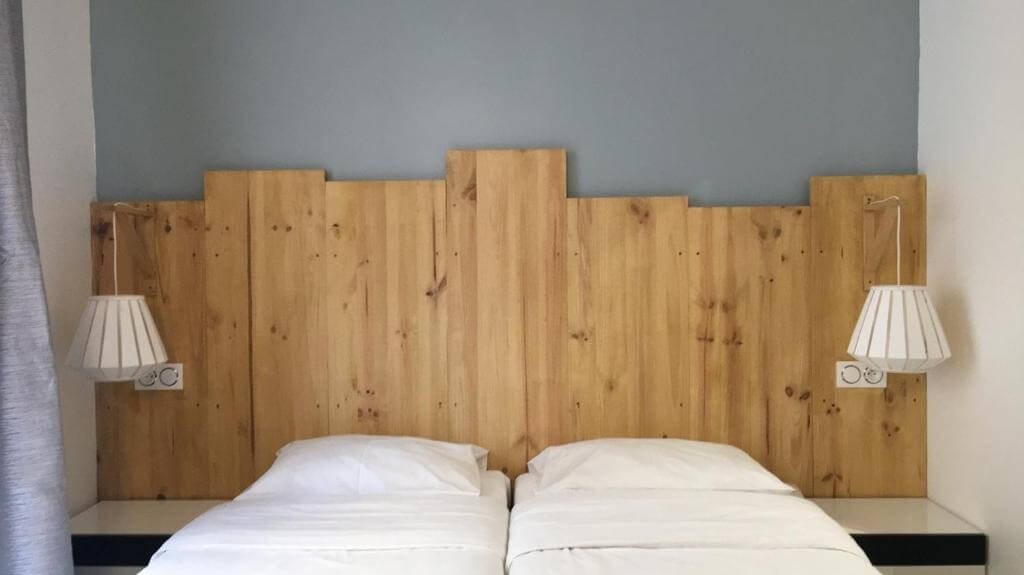
Hôtel Du Midi Paris Montparnasse
It is one of the closest hotels to the catacombs. It is only 140 meters away.
It is a very elegant hotel and many of its rooms have excellent views of the city, as well as being spacious and comfortable.
The hotel has a continental breakfast in its dining room.
The double room starts at 261€.
As you can see, the hotels in the area are more expensive than we usually recommend. It happens that the Montparnasse district is one of the most touristic neighborhoods in Paris and the location of these hotels makes them close to many attractions.

In addition, the area is one of the most elegant in the city and therefore, hotels tend to be more expensive.
Plan Your Trip to Paris
- The best free walking tours of Paris
- 7 days in Paris, the best itinerary
- Getting around Paris
- Tips for your first trip to Paris
- What to take to Paris according to the weather
- The museums of the 16th arrondissement of Paris
- Secret places in Paris that you want to know
- What to see in Paris in Spring
- 30 things to do for free in Paris

This post may include affiliate links. This means we will receive a small commission if you purchase through our links. There is no additional cost to you. With this, you help us to continue creating free content for you. Thanks for your support!
This post may include affiliate links. This means that we will receive a small fee if you make a purchase through our links. It has no additional cost to you. It’s a win-win!
Hi there! I’m Vero! I’ve always loved traveling! I have been living in France since 2018. And traveling around this awesome country. I love road trips and traveling by van, and also, some comfy getaways :) Check out: Touristear.com
Similar Posts

What are The Most Famous Bridges in France?

35 Top Attractions in Paris: Must-See Sights and Landmarks
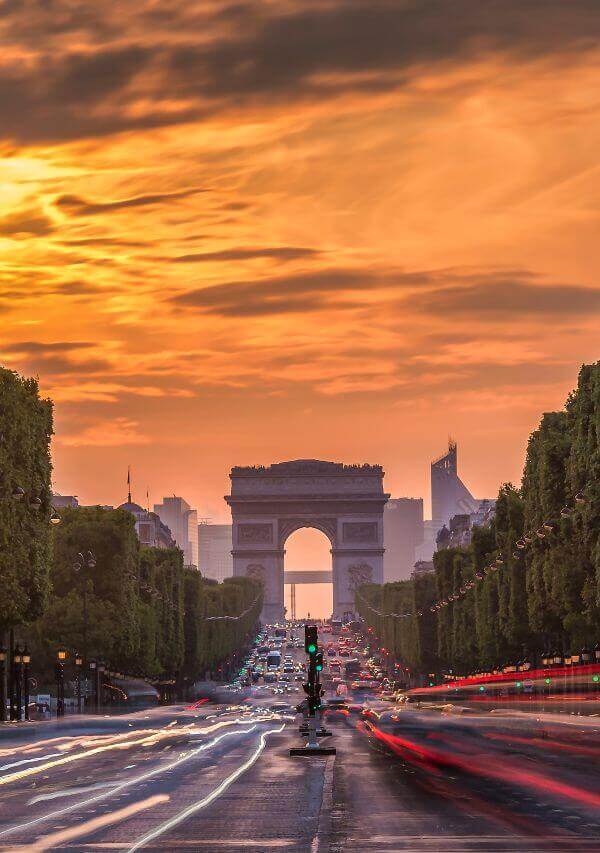
35 Top Things to Do Along the Champs Elysees

Best Things To Do in Paris in October: Weather, Festivals, and More

Paris’ Latin Quarter: A Journey Through History, Art, and Culture
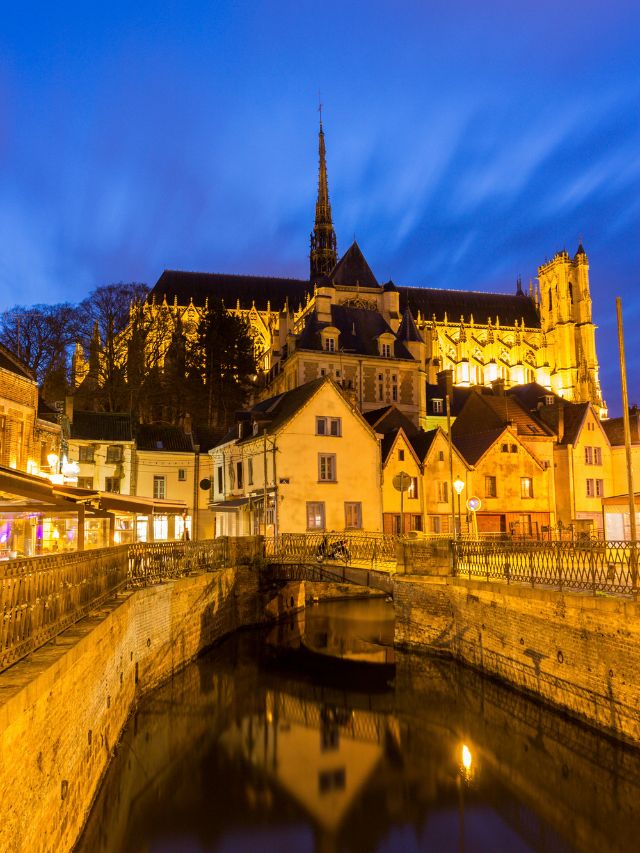
Cities near Paris to Visit in a 1-Day Trip
Leave a reply cancel reply.
Your email address will not be published. Required fields are marked *
Save my name, email, and website in this browser for the next time I comment.
Privacy Overview
Nomadic Matt's Travel Site
Travel Better, Cheaper, Longer
A Visitor’s Guide to The Catacombs of Paris

Paris may be known as the City of Lights but it hides a dark and disturbing history.
Underneath the city, there is a gigantic honeycomb of tunnels. The system is a giant maze, and no one knows quite how many tunnels or chambers there are out there (that’s how big it is). Paris is, after all, a very old city that has been built and rebuilt many times.
These tunnels and chambers are what is left of rock quarries that used to be on the outskirts of the city. Much of the limestone that built the city was extracted from these mines, but as the city grew it expanded to where the quarries were, and quarries had to be abandoned, leaving a sprawling network of tunnels below the city.
The French resistance used these tunnels during World War II, and rave parties flourished there during the 1990s. The famous writer and politician Victor Hugo used his knowledge about the tunnel system when he wrote Les Misérables . In 1871, communards (members of a short-lived commune in France) killed a group of monarchists in one of the underground chambers.
Also located in this maze of tunnels, are the famous Catacombs of Paris. And they are open to the public.
The Catacombs of Paris were “created” at the end of the 18th century. As the cemeteries filled up and had to be moved outside the city, a portion of the tunnels was turned into an ossuary (a place where human skeletons are stored) that contains the remains of millions of Parisians, who were gradually transferred here between the late eighteenth and mid-nineteenth centuries. (Fun fact: The bones were always moved at night to a ceremony made up of a procession of priests who sang along the way to the Catacombs.)
At first, they were deposited in a rather haphazard manner and the ossuary simply piled up. Eventually, the bones were organized and displayed in the way that you see them today.
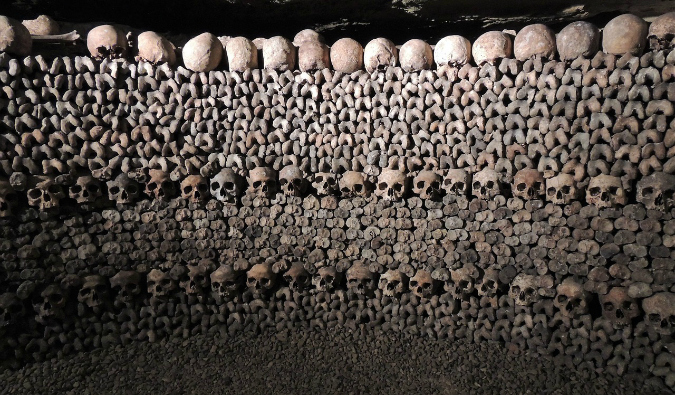
Since the first day they were completed, the Catacombs have been an object of curiosity, even for royalty. In 1787, Lord of d’Artois, who became King Charles X, went down there with the ladies from the Court. In 1814, François 1st, Emperor of Austria, explored them while he was in Paris. And in 1860, Napoleon III visited the catacombs with his son.
Towards the end of the 18th century, the catacombs became a tourist attraction and have been open to the public on a regular basis since 1867.
In the dark galleries and narrow passages, you’ll see bones arranged in a macabre display. The catacombs are eerie. They are quiet, dark, damp, and a bit depressing. There are lots of bones around and most of them are just stacked up on each other. You’ll never know who is who — that skull you are looking at could be someone who died from the plague or a wealthy aristocrat. You never know!
I’ve visited this site multiple times and I always find it super creepy yet super interesting. I’ve been to many unusual places over the years, and the Catacombs of Paris is definitely one of the best. The history is fascinating, and you can see the markings and initials from the centuries of visitors on the walls. It’s like stepping back in time.
Interesting Facts About the Catacombs of Paris
Here are a few interesting facts about this unusual tourist attraction:
- The depth of the Catacombs is equivalent to a five-story building.
- The area you can tour is 2 kilometers long. In its entirety, the catacombs are believed to extend 320 kilometers (199 miles).
- It takes at least 45 minutes to explore the Catacombs.
- The constant temperature in the Catacombs is 14 Celsius.
- There are over 6 million dead Parisians here.
- In World War II, both sides used the Catacombs for clandestine operations. The Germans built hidden bunkers while the French Resistance used the tunnels for navigating the city unopposed.
How to Visit the Catacombs
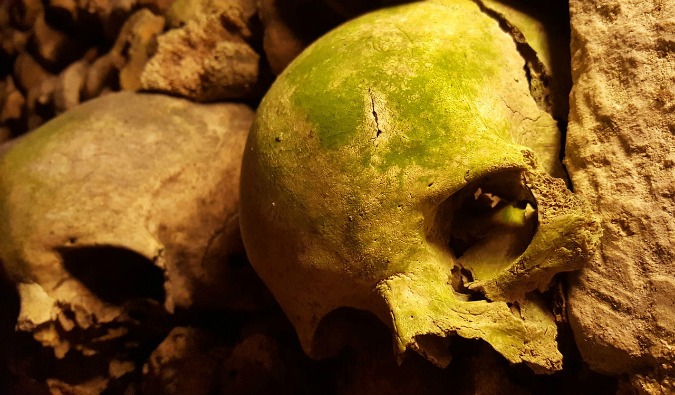
The number of visitors is limited to 200 at a time so the line can get really long. I highly recommend reserving your space in advance to avoid the line. (Seriously, the line gets to be hours long!).
Advance tickets cost 29 EUR while last-minute same-day tickets cost 18 EUR. Tickets are not sold at the door, so even for the discounted same-day tickets you need to book online.
There are audio guides available in English, French, German, and Spanish. They are included in the advanced booking tickets, and if you purchase last-minute tickets you can add them on for an extra 5 EUR. They are definitely worth the money if you don’t have a guide as they add a lot of historical context to your visit.
If you want a skip-the-line guided tour you can book one with Take Walks for 102 EUR. They offer the best tour in the city. It gives you a super detailed look at the history of the catacombs. I was really impressed by it.
Visiting the Catacombs is one of my favorite activities in Paris . It’s something I highly recommend you don’t skip. It only takes about an hour to wander through it completely and will give you a much more nuanced understanding of Paris.
Don’t skip it!
Get Your In-Depth Budget Guide to Paris!

For more in-depth information, check out my guidebook to Paris written for budget travelers like you! It cuts out the fluff found in other guides and gets straight to the practical information you need to travel around Paris. You’ll find suggested itineraries, budgets, ways to save money, on- and off-the-beaten-path things to see and do, non-touristy restaurants, markets, bars, transportation and safety tips, and much more! Click here to learn more and get your copy today!
Book Your Trip to Paris: Logistical Tips and Tricks
Book Your Flight Use Skyscanner to find a cheap flight. They are my favorite search engine because they search websites and airlines around the globe, so you always know no stone is left unturned.
Book Your Accommodation You can book your hostel with Hostelworld as they have the biggest inventory and best deals. If you want to stay somewhere other than a hostel, use Booking.com as they consistently return the cheapest rates for guesthouses and cheap hotels. Three of my favorite places to stay are:
- St. Christopher’s Canal
- 3 Ducks Hostel
- Les Piaules
If you’re looking for more suggestions, here for my favorite hostels in Paris .
And, if you’re wondering what part of Paris to stay in, here’s my neighborhood breakdown of the city.
Don’t Forget Travel Insurance Travel insurance will protect you against illness, injury, theft, and cancellations. It’s comprehensive protection in case anything goes wrong. I never go on a trip without it as I’ve had to use it many times in the past. My favorite companies that offer the best service and value are:
- Safety Wing (best for everyone)
- Insure My Trip (for those over 70)
- Medjet (for additional evacuation coverage)
Looking for the Best Companies to Save Money With? Check out my resource page for the best companies to use when you travel. I list all the ones I use to save money when I’m on the road. They will save you money when you travel too.
Want More Information on Paris? Be sure to visit our robust destination guide on Paris for even more planning tips!
Got a comment on this article? Join the conversation on Facebook , Instagram , or Twitter and share your thoughts!
Disclosure: Please note that some of the links above may be affiliate links, and at no additional cost to you, I earn a commission if you make a purchase. I recommend only products and companies I use and the income goes to keeping the site community supported and ad free.
Related Posts

Get my best stuff sent straight to you!
Pin it on pinterest.
8 things you may not know about the catacombs in Paris and how to visit them
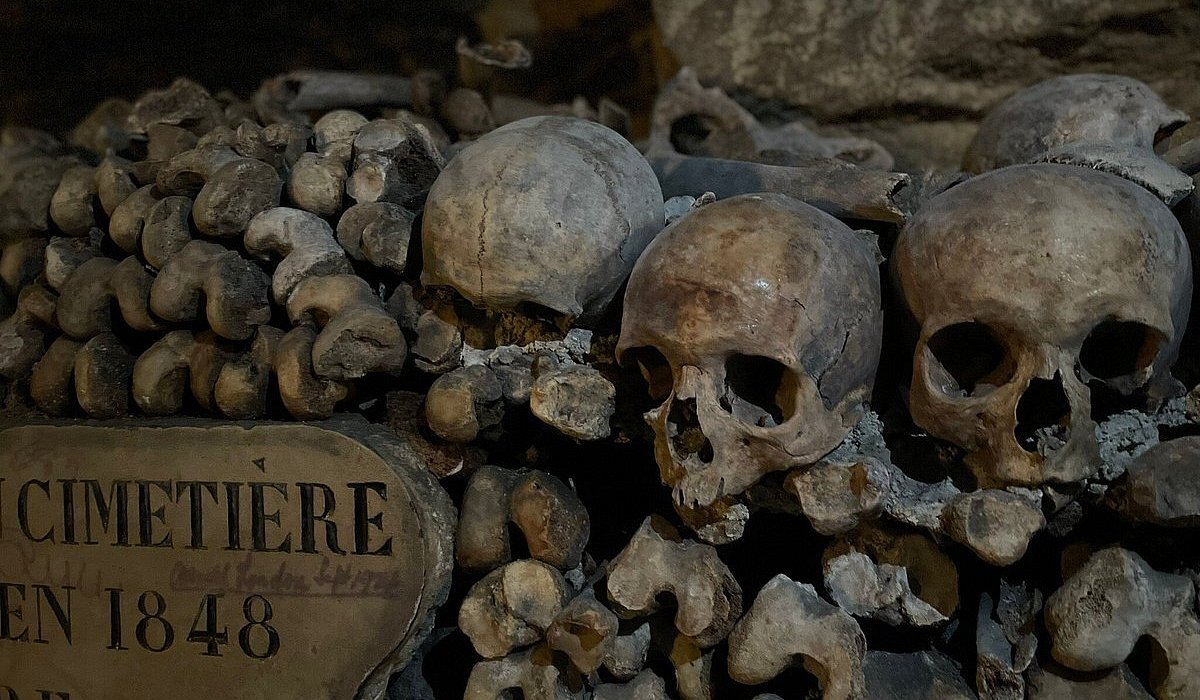
Paris is a multi-faceted city known for its historical monuments, inspiring art and museums, and romantic landscape. But unknown to many visitors, there’s a darker side to Paris underneath its bright and bustling cityscape. Enter the hidden world of the Catacombs of Paris . Find out the macabre history behind this network of tunnels containing the remains of Parisians and things to know for a deeper exploration of Paris.
What are the Catacombs of Paris?
The history of the catacombs began in the 18th century when Paris was beset with major public health problems. The city was growing, the cemeteries were filling up fast, and overflowing graveyards were causing sanitary issues for the surrounding neighborhoods. Paris authorities had to relieve congestion and improve the city’s public health conditions. They found a quick solution in the former Tombe-Issoire quarries, an accessible network of tunnels built during Roman times.
In 1785, the evacuations of graves around Paris started and bones were moved into the tunnels. On April 7, 1786, the underground site was consecrated as the “Paris Municipal Ossuary”—a place for the storage of human remains. Since then, the site is called the “Catacombs”, a reference to the burial sites with passageways built by the ancient Romans.
Cool facts about the Catacombs of Paris

1. It took 12 years to move 6 million bodies
It took over 12 long years to relocate the remains of 6 million bodies to their final resting place in the catacombs. The first evacuations started at the largest cemetery in Paris, the Saints-Innocents. The process of transferring the bones was labor-intensive, involving diggers, cleaners, drivers, horses, torchbearers, and even priests. The tasks had to be done secretly at night to avoid upsetting the local communities.
2. Only a small section of the catacombs is open to the public
The labyrinth of underground tunnels is massive and spreads over 150 miles below Paris. In 1809, a section of the catacombs was opened to the public, who could access it by appointment. The site generated such great curiosity and interest amongst locals and foreigners that the visiting slots were filled up quickly. Today, visitors can only access about one mile of the tunnels, usually via guided tours of the Paris Catacombs . When locals use the term “catacombs”, they are usually referring to the larger network of tunnels.
3. There are 243 steps in the Paris Catacombs
The catacombs are buried deep underground and the depth of the tunnels is roughly the height of a 5-story building. To visit the Paris Catacombs, you’ll have to walk 131 steps down to the tunnels and climb 112 steps to exit. At the entrance, you’ll see the famous sign Arrête, c'est ici l'empire de la mort! , which means “Stop! This is the empire of death!”.
4. Skulls and femurs in the catacombs were artfully organized

Initially, the catacombs were a cavernous storage space where the bones were piled haphazardly. The current galleries of skulls and femurs are the results of the revamp of the catacombs, led by Louis-Étienne Héricart de Thury, Director of the Paris Mine Inspection Service, before it was opened to the public. The bones were artfully organized and displayed in the underground museum. He redesigned the chambers with decorations from outdoor cemeteries and installed stunning structures like arches and columns. Signs, captions, and even educational cabinets about minerals of the limestone quarries and bone pathology were added to enhance the visitors’ experience.
5. The catacombs are filled with artworks and sculptures

Other than the remains of the dead, the catacombs are home to fascinating artworks and sculptures created underground over the years. One artist who contributed impressive sculptures was Francois Décure, a quarry worker and former soldier. He carved intricate designs of buildings and scenes out of the limestone walls. It’s believed that many other sculptures and mosaics in the tunnels were made by sculpture students who used the soft rock to practice their craft.
6. Farmers used to grow mushrooms within the catacombs
It may be difficult to believe that the tunnels of the catacombs were once used to grow Paris button mushrooms or Champignons de Paris . According to local stories, in the 19th century, the Napoleonic soldiers discovered that horse manure combined with the cave’s dark and damp environment provided the perfect conditions for growing mushrooms. Farmers moved to the abandoned quarries to cultivate mushrooms. Some even believed that these mushrooms had special flavors due to the infusion of minerals from the limestones.
7. Secret meetings and parties were held in the catacombs
The clandestine nature of the catacombs meant that the tunnels were used for secret activities throughout its history. During World War II, the French Resistance retreated underground and had meetings to plan their attacks against the Germans. There were also rumors that pointed to King Charles X’s secret parties in the tunnels.
8. A community of cataphiles explores its secret passageways
Even though it’s illegal to access parts of the catacombs other than the site open to visitors, there’s a group of urban explorers called “Cataphiles” who navigate the tunnels secretly. This tight-knit community ventures into the passageways through hidden entrances and some claim that they respect and understand the catacombs’ legacy and help to map out and preserve the network of tunnels.
How to visit the Paris Catacombs
The entrance to the Paris Catacombs is located at 1, Avenue du Colonel Henri Rol-Tanguy (Place Denfert-Rochereau). Stop at Denfert-Rochereau Metro station and take a short walk to the entrance. The one-mile underground circuit is one way and you’ll exit from another opening that’s about a 10-minute walk from the entrance.
The site is open Tuesday to Sunday from 9:45 a.m. to 8:30 p.m. (ticket window closes at 7:30 p.m.). The number of visitors is limited to 200 and the lines are usually long. To avoid getting stuck in a long line, arrive early or late after 6:00 p.m. or buy a timed-entry ticket on their website in advance. Audio guides are available for rent for a self-guided tour. For a more in-depth visit, join a private skip-the-line Paris Catacombs tour with a knowledgeable guide and gain special access to restricted areas.
Tips when visiting the Paris Catacombs

- Bring a small bag as large bags aren’t allowed and there are no lockers at the site.
- Wear comfortable shoes as you’ll be going up and down steps and through narrow passageways, where some sections are uneven or even slippery.
- Bring a light jacket as the underground temperature is about 57°F.
- The site is not recommended for those with claustrophobia, respiratory or cardiac conditions, or have accessibility requirements. Children under 14 years should be accompanied by an adult.
- You can take photos using flash but be mindful not to disturb other visitors. Camera tripods aren’t allowed.
- Remember not to touch the works, bones, and surroundings. Bag checks will be done at the exit so don’t take anything out of the site.
Recommended tours and activities

More like this:
- 7 best day trips from Paris by train
- 12 famous places in Paris to visit
- Where to see Monet's art in and near Paris

Visiting The Paris Catacombs, The Complete Guide + Tips
Looking for something eerie to do in Paris? If bones are on your bucket list, head to Paris’ Empire of Death, the Catacombs of Paris.
What are the Catacombs? Simply put, they’re a mile long underground necropolis with more than 6 million artfully arranged skeletons. The subterranean cavity serves as a tomb and macabre momento mori .
The Catacombs are an alternative world draped in darkness and shrouded in silence. They have fascinated people for centuries. In fact, the Catacombs are one of the top tourist attractions in Paris, a place where you can step down into more than 200 years of history.

Tickets & Tours
First, some logistics before we delve into the Paris Catacombs.
Only 200 people are allowed inside the Catacombs at a single time to prevent any damage to the bones. The facility tracks visitors assiduously.
Because of this restriction and the site’s immense popularity, tickets sell out fast. It’s essential to pre-book a skip the line ticket. If not, you could encounter lines that last for hours in high season. Even in winter, when I visited, there was a line.
Click here to book a skip the line ticket. Wondering whether to book a tour too?
If you are fascinated with the history of the Paris Catacombs, this might be the right option for you. I went on this excellent 2 hour guided tour with VIP access .
I had an informative guide (Victoire) and we got to see secret spots in the Catacombs that a regular visitor can’t access. Also, the guide pointed out things I would have missed just because of the dim lighting.
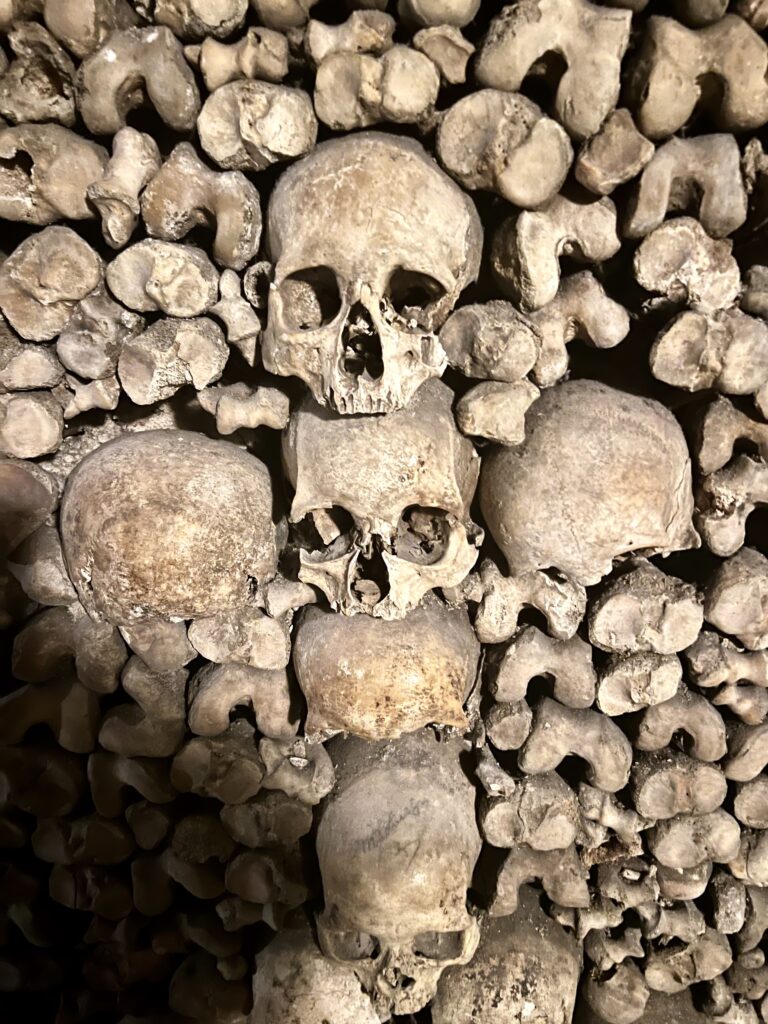
You can also book a kid friendly tour with a storytelling guide.
The Catacombs do not offer any guided tours in English. There is one in French for 20 people on Thursday at 1:00 pm. You can book online on the website .
Story Of The Paris Catacombs
No guide to the Paris Catacombs is complete without a look at its fascinating history. The Catacombs began as ancient underground quarries. The first excavations were from open quarries in Gallo-Roman times.
In the 12th century, there was a high demand for stone as the building of Notre Dame and the Louvre began. Workers dug underground, so as to not disrupt the top soil needed for farming.

When the mining started, the quarries were outside of town. But, over the centuries, the limestone quarries continued to extend to meet demand.
Today, it’s estimated that 10% of the city of Paris sits atop an underground quarry. Even today, when a person buys a house, they are entitled to know whether it was built atop the quarries.
The quarry workers toiled away in harsh conditions. Most of them went blind because of the lack of light in the tunnels. The only source of light was candles.
To combat this problem, the streets in the quarries were given names that corresponded to the streets above ground. Paris has been redesigned many times since then. So, these are now akin to ghost streets, an identical carbon copy of 18th century Paris.
When a quarry was tapped out, it was abandoned. Houses were progressively built on top of the tunnels.
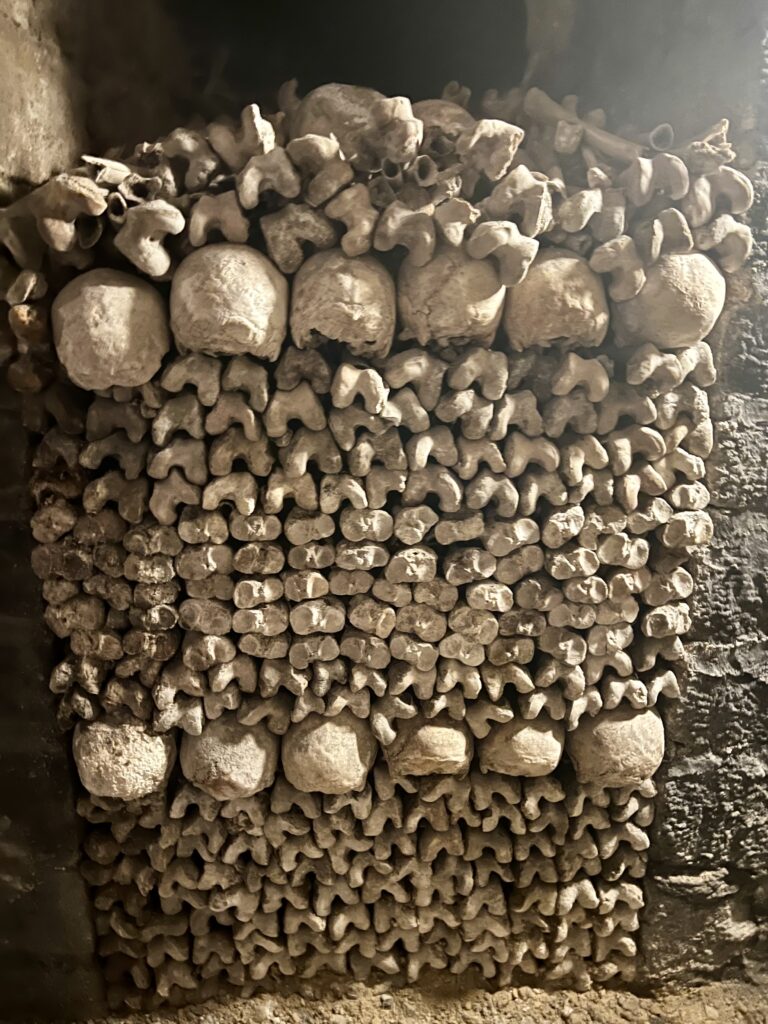
But the quarries proved to be a shaky building foundation. In 1774, due to the weight of the buildings, the first sink hole formed on Hell Street, taking down houses and people with it.
In 1776, the quarries were permanently closed. The state hired Antoine Dupont to map the underground spaces and stabilize them by erecting support walls and piers.
The task was so formidable he created a Quarry Inspection Unit run by Axel Guillaumot, who became known as the “Man Who Saved Paris.” He warned the king, Louis XVI, of the dire nature of the situation.
Guillaumot was authorized to fill in the open spaces and built an elaborate network of access tunnels to allow regular inspection and repair work. Interventions still continue today, with the last sinkhole occurring in 1961.
But what of the ossuaries of bones? Well, sink holes weren’t the only problem in Paris. There was also a horrific sanitation problem affecting the health of the citizens.
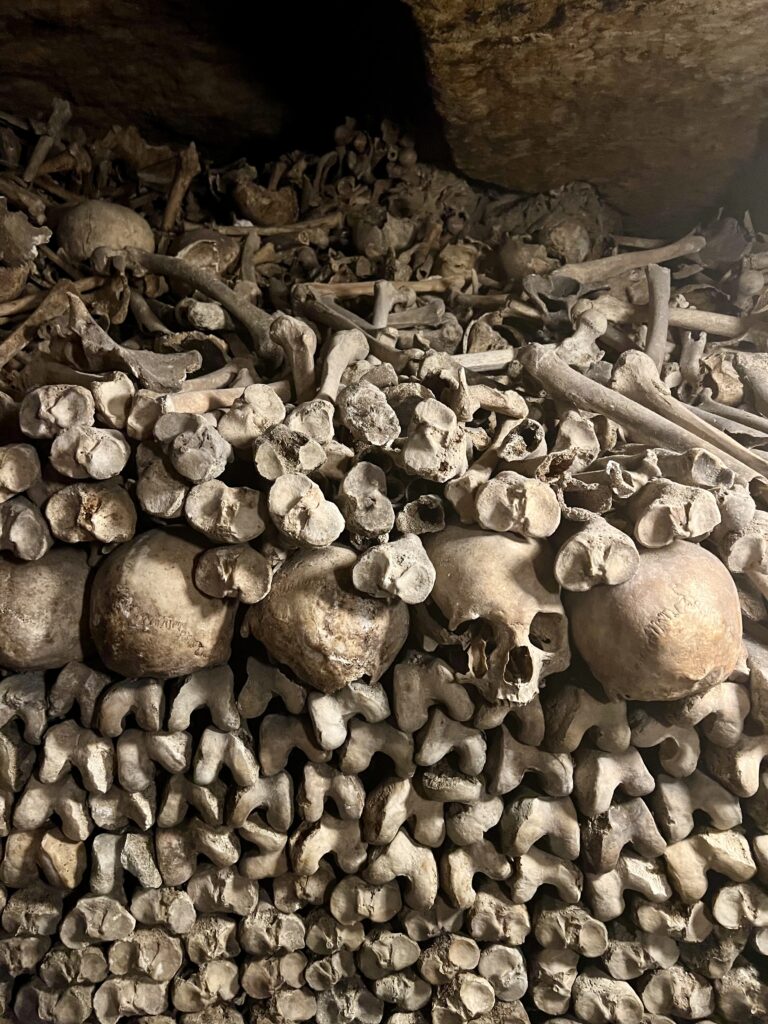
Paris had a lot of dead bodies and a limited amount of space to bury them in cemeteries. Bodies were stacked up in cemeteries and graveyards, rotting and poisoning the air with bacteria.
In response to the public health crisis, the French government decided to shut down and evacuate the city cemeteries. Beginning in 1785, bones from the cemeteries were transferred to the old underground limestone quarries.
To avoid public outcry, the bones were transferred at night and scrupulously ritualized.
To respect the formalities, priests led ceremonial processions of black-veiled, bone-laden carts into the quarries and requiems were sung during the transfer.
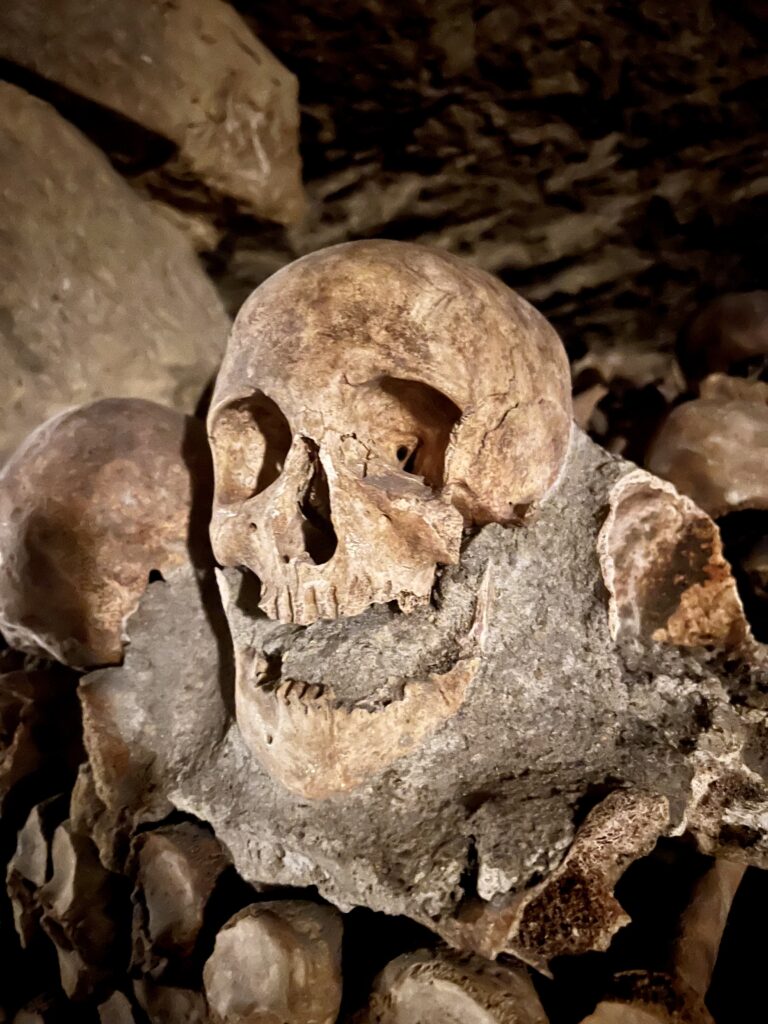
Each transfer was completed with the placement of a plaque indicating the church and district from which that stack of bones came and the date they arrived.
Starting in 1809, the Catacombs were opened to the wealthy elite by appointment. Later, they were opened to the public at large and became a fashionable place to visit.
Parisians contemplated their fleeting mortality in an appropriately Gothic decor. Visits were by candlelight until electricity was installed in 1987.
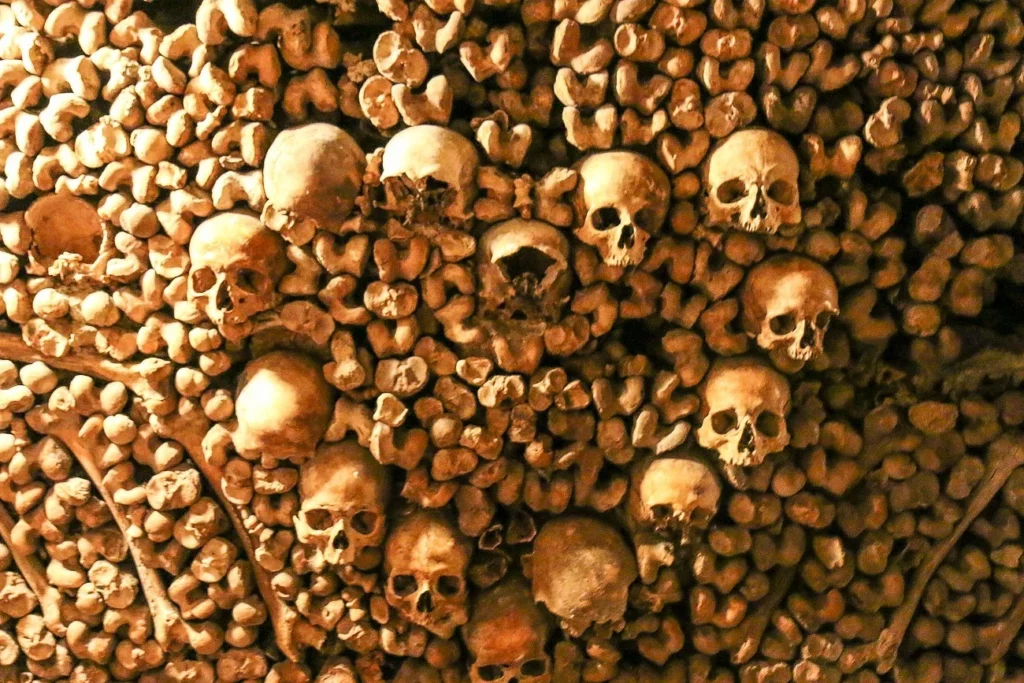
It was Napoleon who really transformed the underground tunnels into a tourist attraction, akin to the Catacombs of Rome. He hired people to redecorate bones that lay in large piles.
Macabre quotations were engraved on the stones. The walls were lined with tibias and femurs and punctuated with skulls. Bones were arranged in circles or hearts.
Although most of the bones are anonymous, it’s thought that some famous Parisians are buried there — Jean-Paul Marat, Maximillian de Robespierre, Charles Perrault, Nicolas Fouquet, Jean de La Fontaine, and 1343 people guillotined at the Place de la Concorde during the Reign of Terror.
Among those guillotined were King Louis XVI and Marie Antoinette. Some say the ghost of Marie Antoinette haunts the Catacombs.
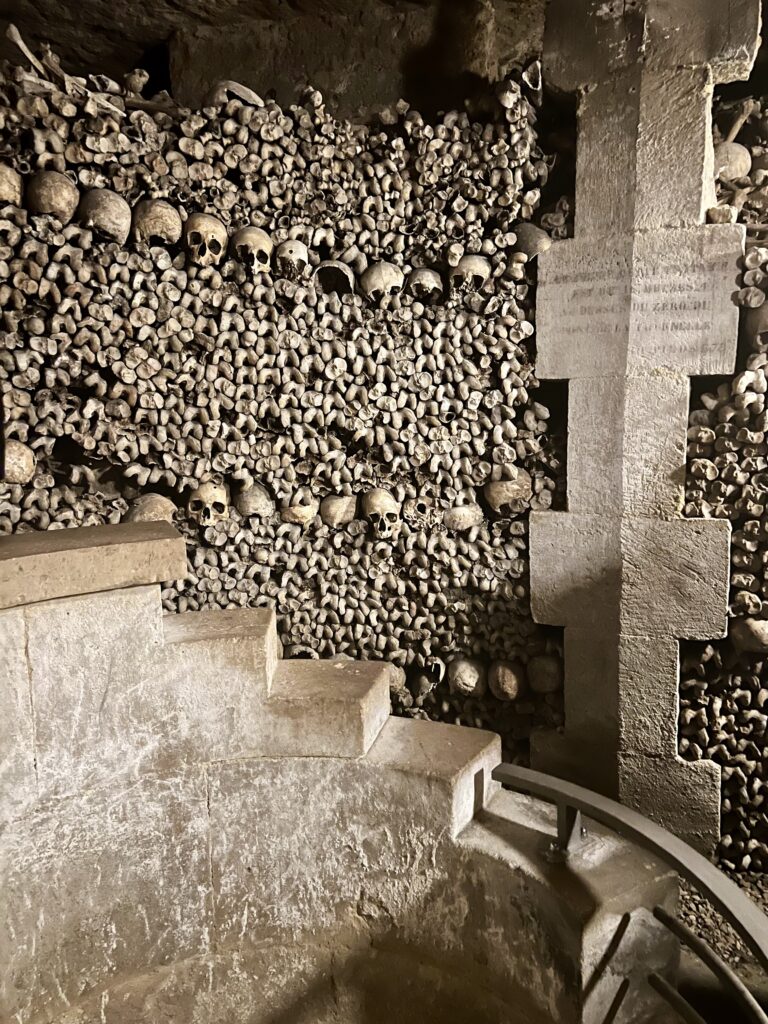
Guide To The Paris Catacombs: What To See
When you visit the Catacombs, legally, you are only seeing a tiny part of this vast underground network.
There are two parts to a Paris Catacombs visit: the quarries and the ossuary. If you are on a tour, you will also have access to several restricted areas in the quarries.
When you enter, there is a series of informative placards in small rooms that explain the history of the catacombs. If you’re on a tour, the guide will give you a summary.
Your visit to the bony underworld begins by descending a 130 step spiral staircase that takes you 60 feet underground. You’ll first pass through the underground quarries. When you reach the ossuary, you’re greeted by a sign reading “Halt, this is the empire of the dead.”
You’ll walk along uneven limestone floors for about a mile and eventually emerge at a location quite far from where you entered.
Here’s what you can see along the way.
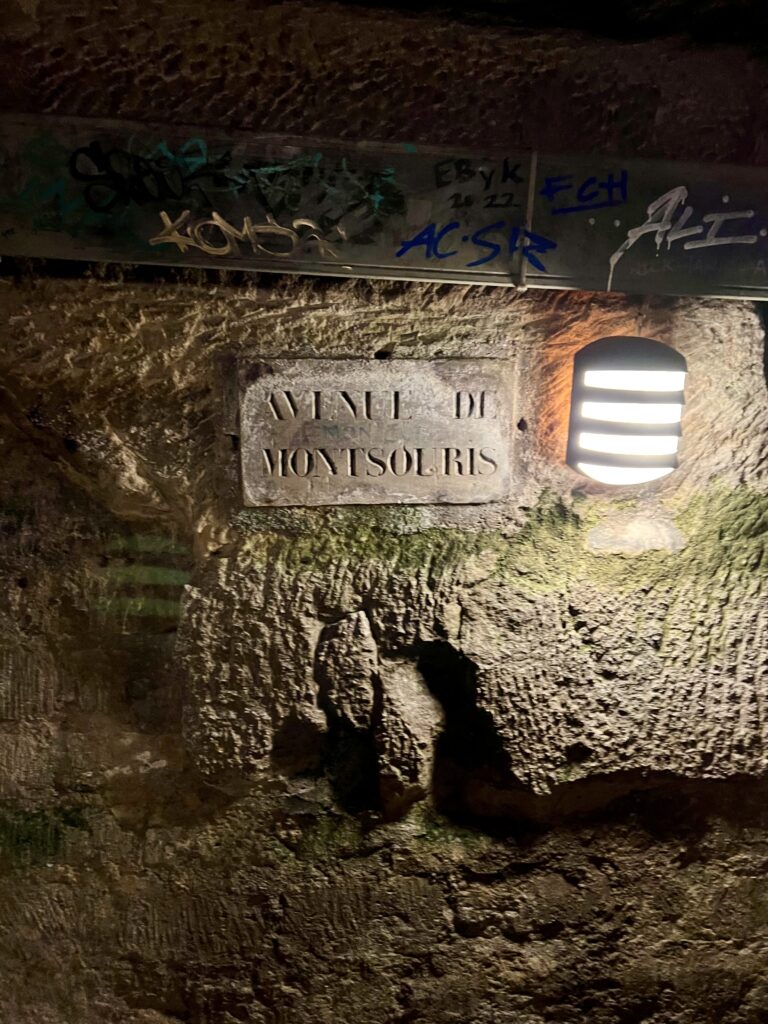
1. Signs, the “Negative” of Paris
As you begin to walk down the dark and narrow corridors of the quarries, you’ll see signs and a black tar line on the ceiling marking the direction to take.
The signs indicate the names of streets you are under, many of which no longer exist. The signs are referred to as the “negative” of Paris.
The architects and engineers of the Quarry Inspection Department also marked their works sites with years and initials. The engraved inscriptions allow historians to follow the progress of the work.
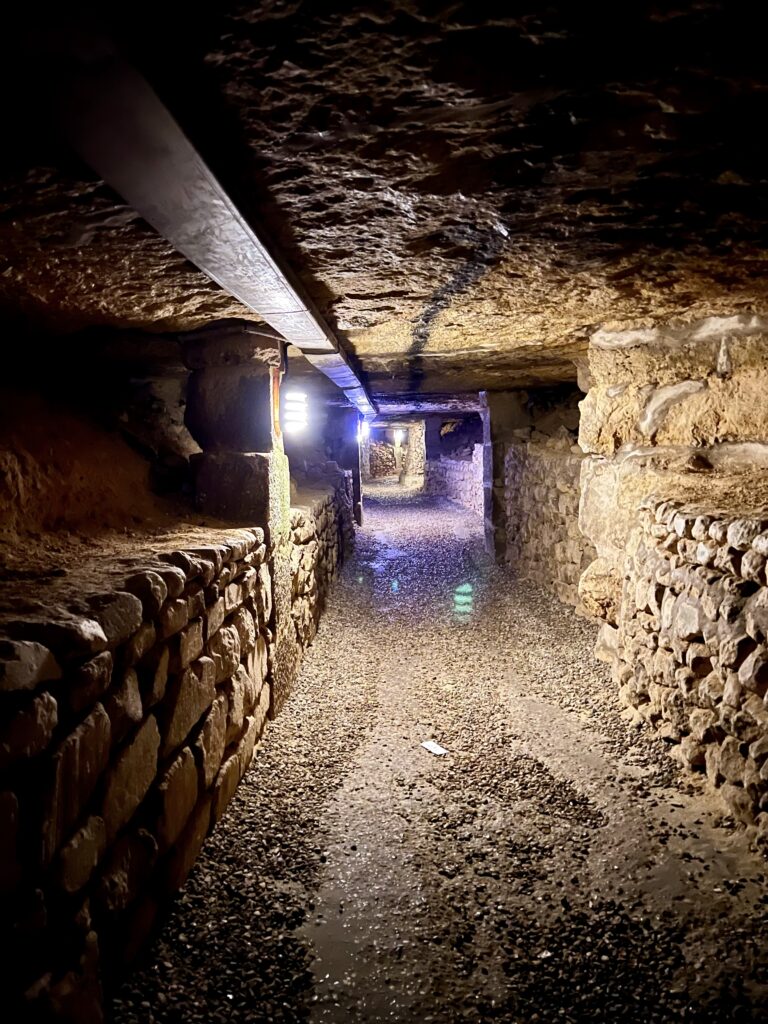
2. Stone Masonry Workshop
The part of the Catacombs called the “workshop” or “atelier” is the part of the quarry still visible.
Two pillars hold up the ceiling, put there by sheer human force. They date from the Middle Ages.
The workshop shows the quarryman’s use of a hagues et bourrages (dry stone wall and waste) quarrying technique. They would extract limestone and then fill in the void with construction waste.
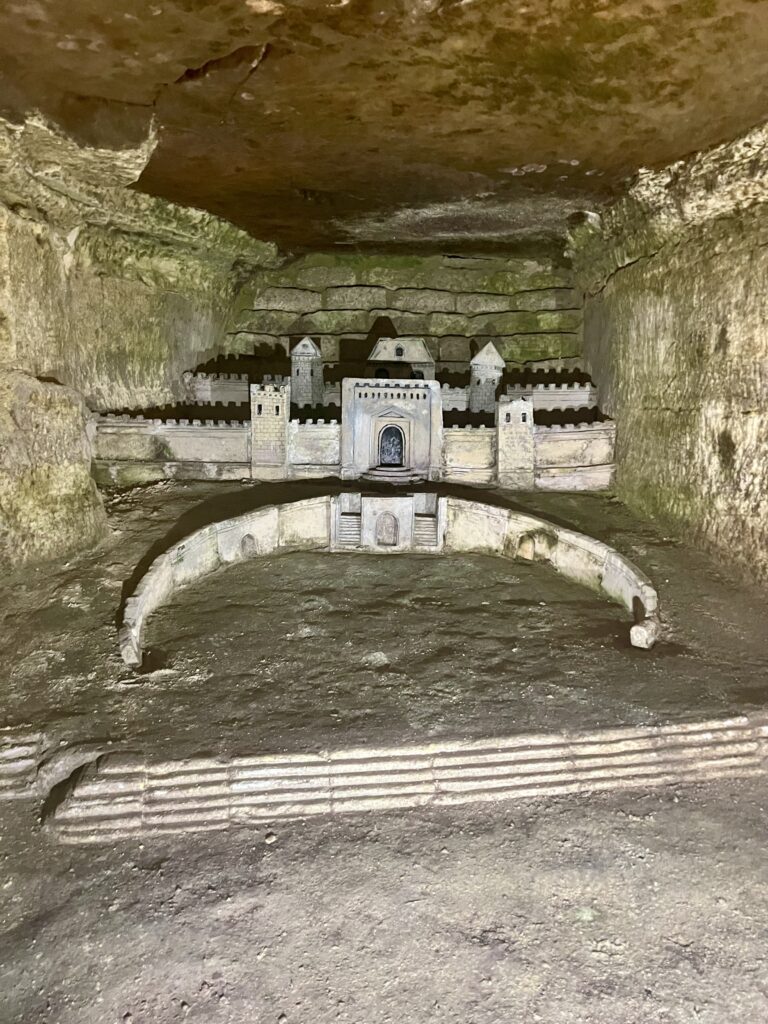
3. Decure Sculptures
If you are on a guided tour, you will make a small detour to a lower level and see two sculptures carried out by a member of the Quarry Inspection Unit named Decure. You may have to wait a bit for a guard to unlock this restricted area for your group.
Decure was the original Cataphile. He would come early or stay late in the quarries to work on his sculptures. The first one was competed in 1782 and is assumed to represent windmills in Minorca, an island he visited as a soldier.
The second one is more elaborate and represents the citadel of Port Mahon on Minorca. Decure worked on it from 1771 to 1782.
Unfortunately, while working on his masterpiece, he was fatally injured when a roof caved in on him.
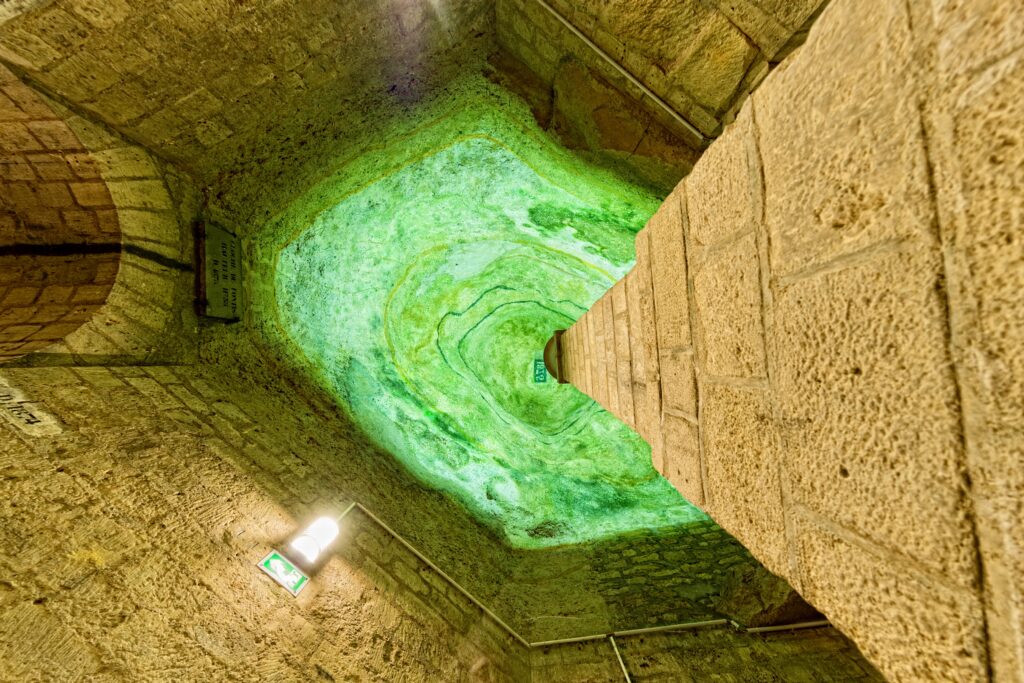
4. The Quarryman’s Foot Bath
Near the Decure sculptures is the Quarryman’s Foot Bath. It’s a water well that was the first geological drill to be used in Paris.
It got its name from the fact that the water was so clear you could only detect it by stepping into it.
One can imagine what fun a mischievous 19th century guide would have had with this feature.
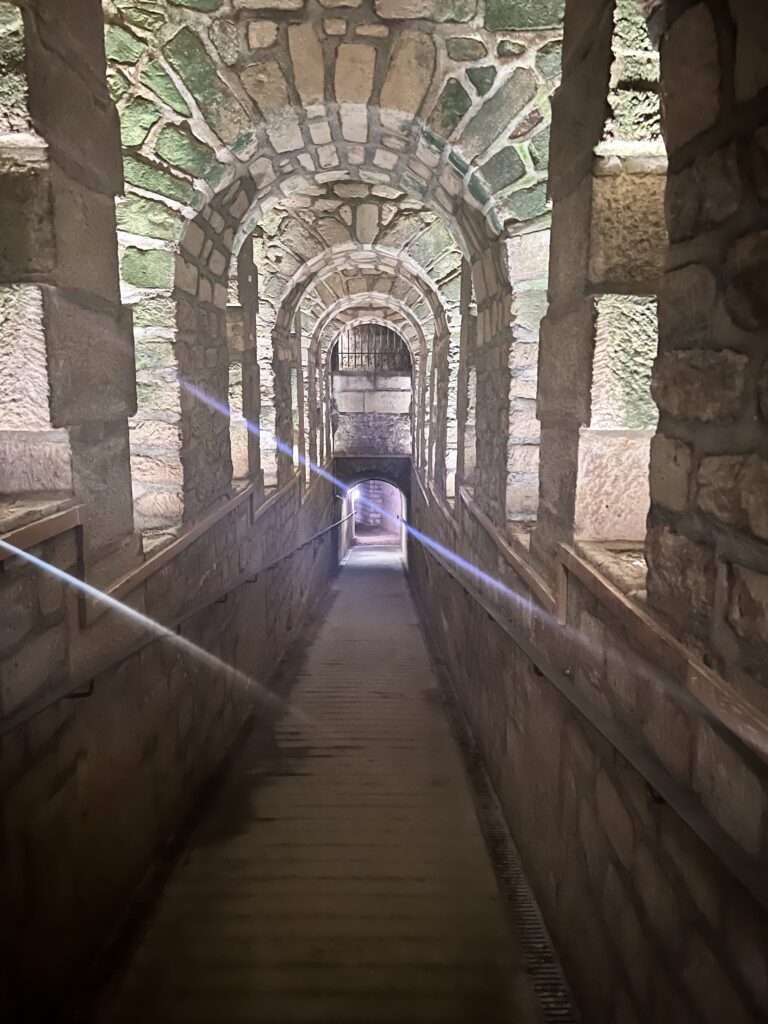
5. Crossroads
At this point, the quarry gallery overlooks a steep ramp that connects the upper and lower Catacombs. The ramp was installed when the Ossuary was created in the 18th century.
Tuscan pilasters are actually solid pillars holding up the ceiling.
Next, you arrive at the Catacombs’ pièce de résistance , the Ossuary. The sign “Stop, this is the empire of the dead” marks the entrance. Thus begins the path that leads you through the remains of millions of Parisians.
Another lintel forces you to bend down, as if mandating respect. On one side, it’s engraved with the words Memoriae majorum (in memory of ancestors). The reverse side warns that “However thou enterest, Death shadowlike will follow thy every step”
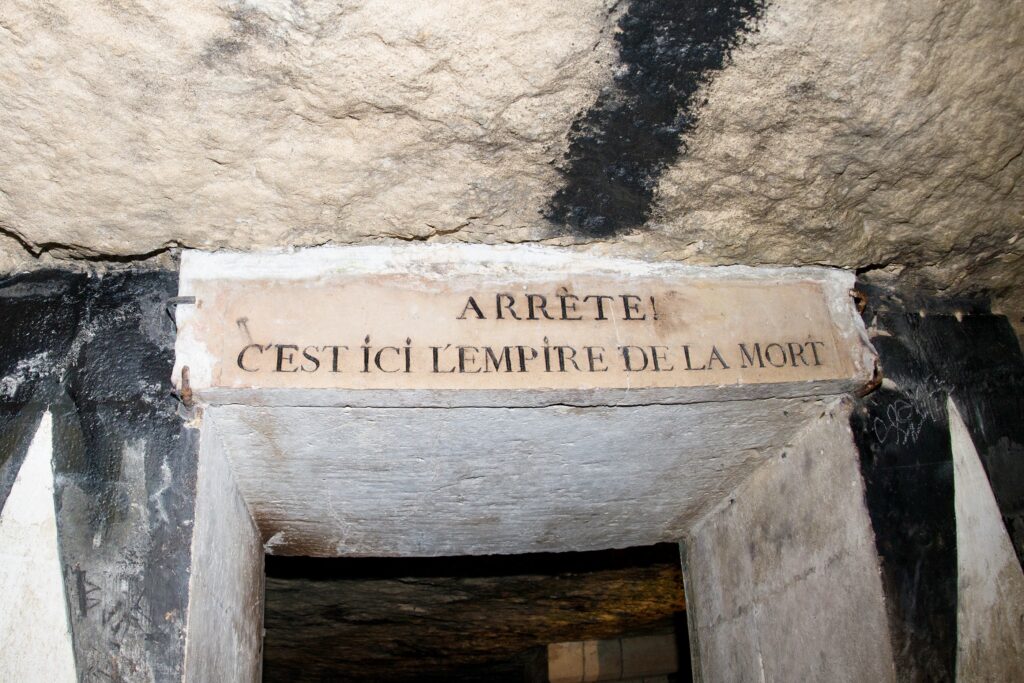
At first, the bones were thrown in somewhat haphazardly. But under Inspector General Herbert de Thury, this area was developed.
The long bones and skulls were arranged decoratively in different patterns to form a back wall. Behind that wall other bones were piled and you can see how far back they go.
To convey a strong sense of respect for the dead, Thury installed plaques specifying which cemetery the bones came from. They almost look like museum exhibits, making the Catacombs more of a monument with appropriate funeral decor.
You begin by walking between two walls of bones. The walls are ornamented with cranium-studded friezes arranged at different heights. Some craniums are arranged in the shape of a heart.
If you have a guide, they will point out the difference between male and female skulls in their eyebrows, eye sockets, and ears bones. You can also identify people who died of syphilis or leprosy.
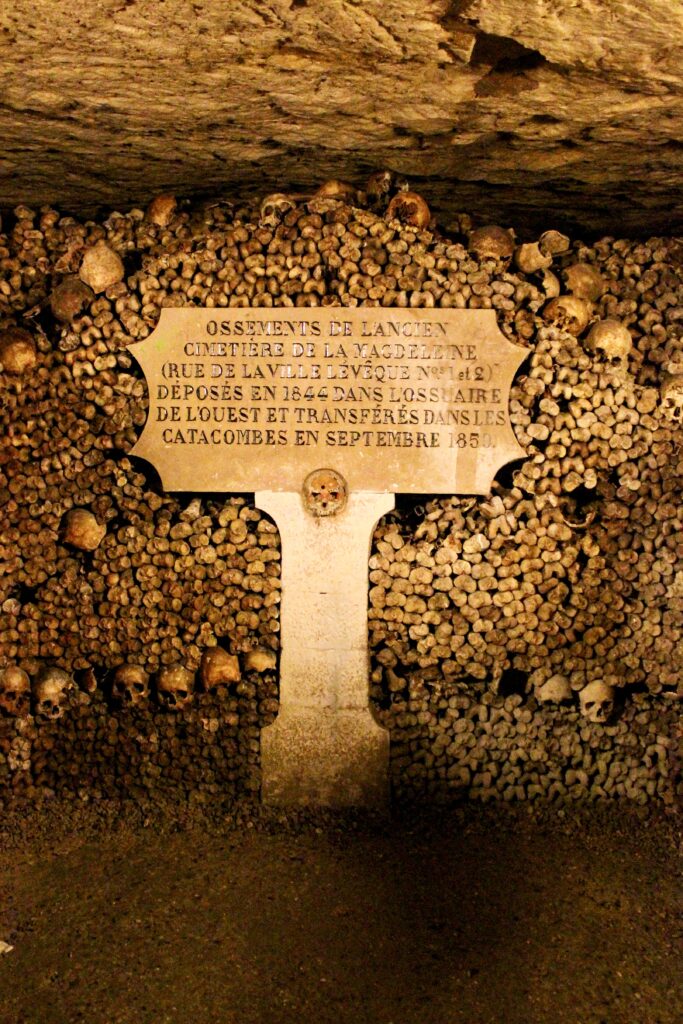
You will see a stone cross, the Croix de Bordeaux, which is a rare religious symbol in the Catacombs. Most religious markers and symbols of the monarchy (like fleur de lis ) were eradicated during the French Revolution.
The next monument you encounter is the Samaritan Fountain. Its name refers to a bible verse promising water to all. But the quarrymen inverted the verse warning that if you drink from it, you will always be thirsty.
If you are on a guided tour, you can also inspect the Altar for Mass. Once completely surrounded by bones, it was damaged and consolidated.
Today, it’s a reproduction of an antique tomb. The very first bones transferred to the Catacombs lie behind the altar. This is where you can have a seat.
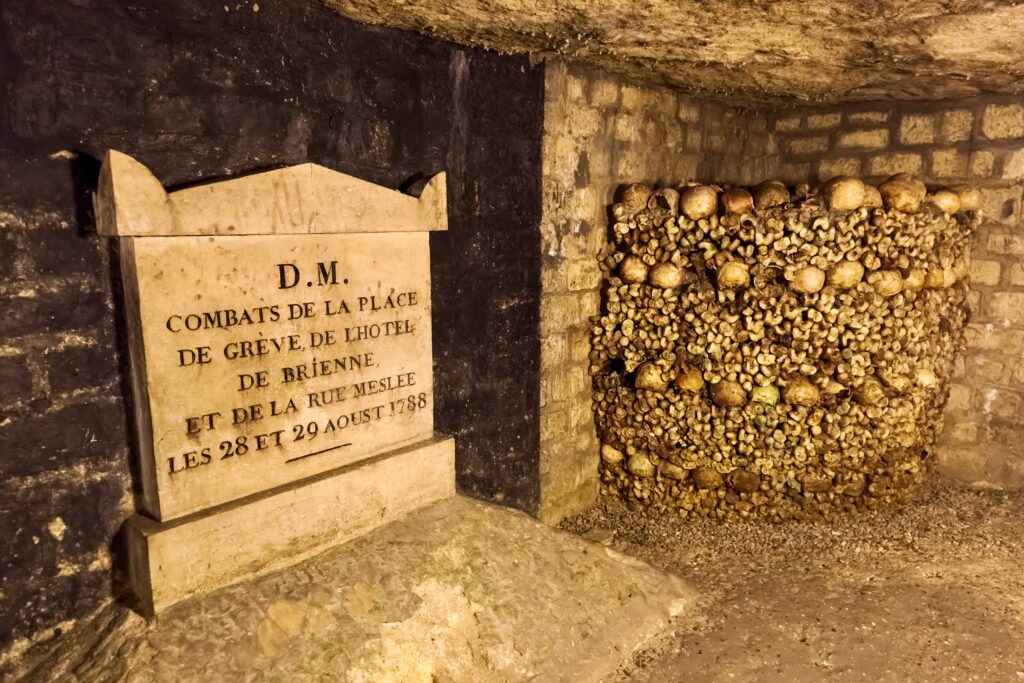
You will then walk past a massive support pillar called the Imitation Pillar, Gilbert’s Tomb, and the Le Mierre’s Gallery.
The latter is known as the Grand Gallery of the Catacombs. This is where Thury gathered together strange anatomical objects discovered during his tenure — fused bones, fractured bones, necroses, and oddly shaped specimens.
Then, there is a tomb monument in tribute to the French Revolution, one mentioning the 1871 Paris Commune, the French Revolution Crypt, a monument dedicated to Pierce Oscar of Sweden’s visit, and another for the bones from the Madeleine Cemetery.
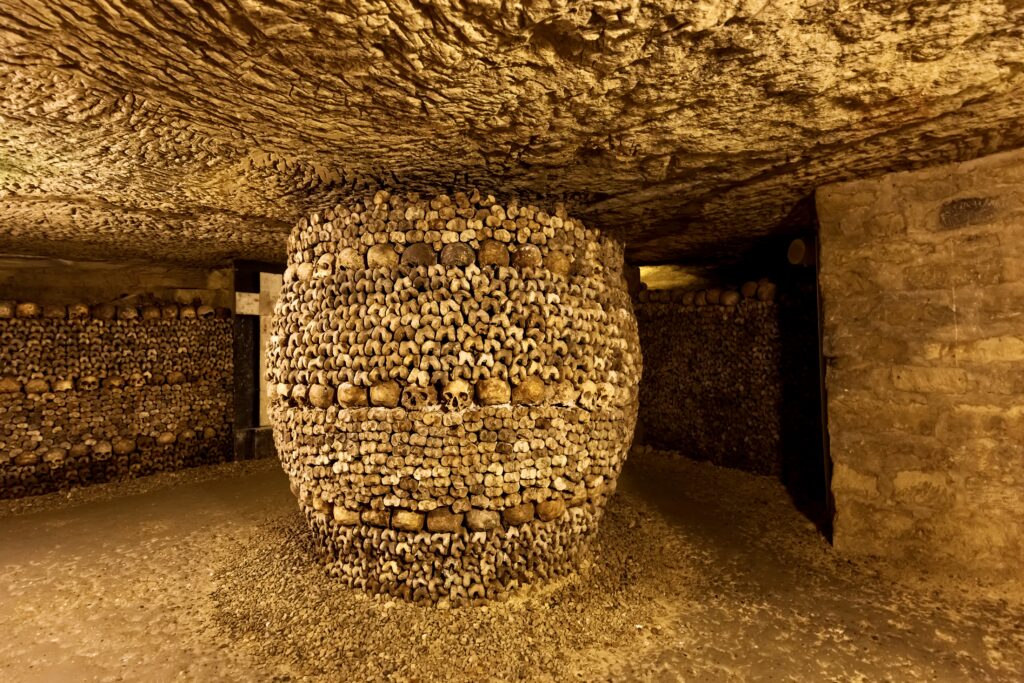
The next gallery space, a bit lower, is the Crypt of the Passion of Christ. You will see the Barrel, a steel pillar clad in bones that resembles a giant barrel vat.
At last, you will arrive at the exit staircase, which is narrow and spirals upward. Built in 1784, it dates back to the origins of the Catacombs.
What Is A Cataphile?
The official Catacombs are the only space open to the public. But there are still 170 miles of sprawling underground quarries.
Urban explorers who enter them illegally are called “Cataphiles.” These rule-breakers have a deep-rooted attraction to the underground.
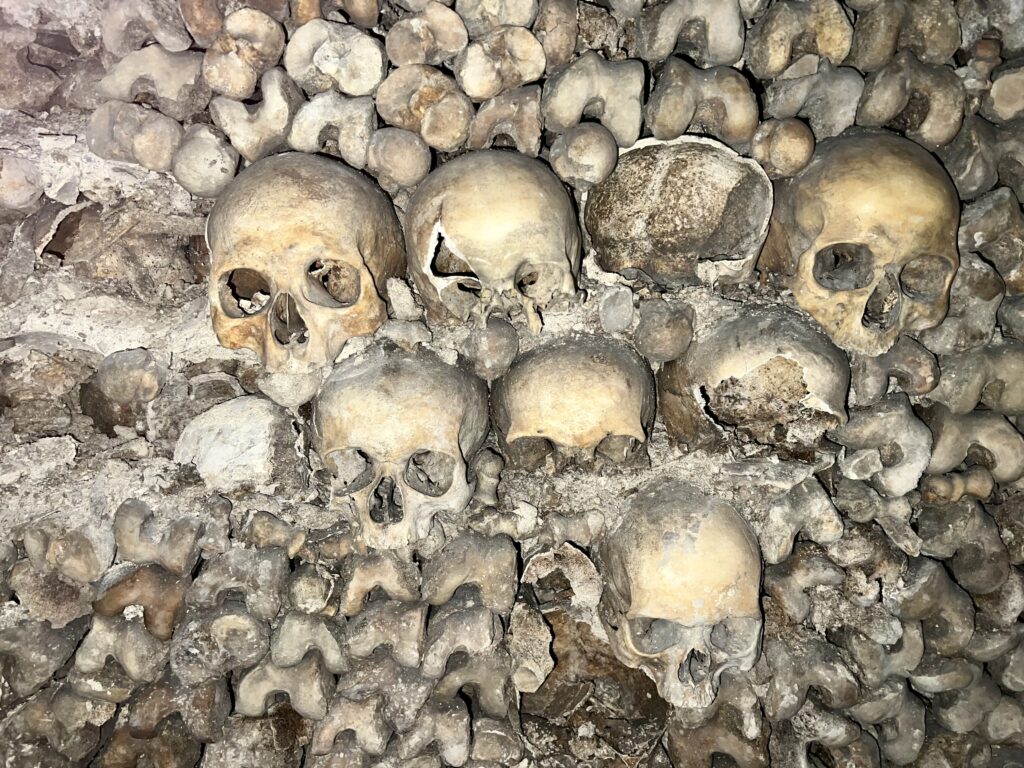
They enter the Catacombs through secret unauthorized entrances via tunnels, drain covers, or sewers known as Cataflaps. Information on where to find entrances is a fiercely kept secret and the entrances are often camouflaged.
The fine for illegally entering is only € 60, so that doesn’t have much of a deterrent effect. Cataphiles are rarely caught and many inspectors look the other way.
Some Cataphiles come for the peace and quiet of the surreal place. Others create art or crave adventure. Still others set up party rooms and host concerts. Some like the camaraderie of their fellow Cataphiles, almost like a secret cult.
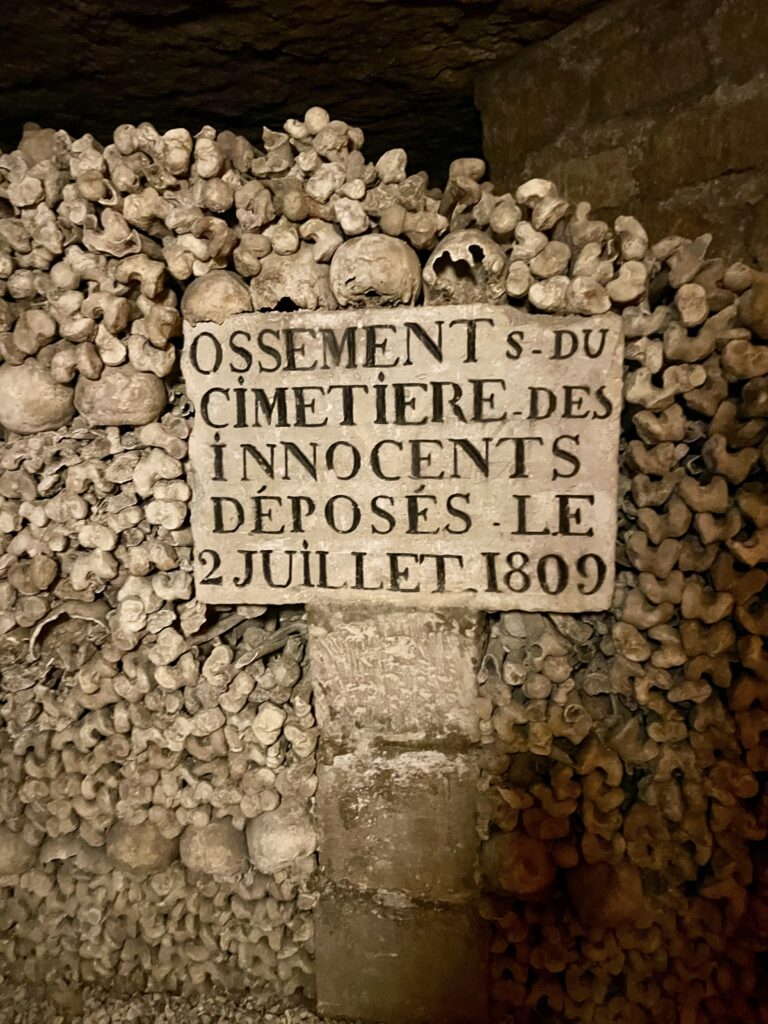
My guide told me that in 2004, near a metro station, Cataphiles pirated power from the station’s electricity. They built an underground bar and cinema with a full size move screen, complete with fairy lights. They guarded the space with a tape of dogs barking to scare people away.
The Cataphiles took the precaution of having surveillance cameras set up. When they saw inspectors (called Catacops), they whisked away all their things and vanished. They left a note saying “Do not try to find us.”
Still, as the unofficial custodians of the Catacombs, the Cataphiles can be useful.
With their expert knowledge of the networks, they help find people who stumble into the Catacombs and get lost. They also anonymously report dangerous spots to inspectors so that they can be fixed before a deadly cave in occurs.
The Cataphiles don’t like the thrill-seeking newbie explorers who have little interest in the history of the place. The Cataphiles call them “Cataclasts” because they often degrade the quarries and leave rubbish. The Cataphiles then do a “Cataclean” to spiffy up their special place.
Practical Information & Tips for Visiting The Catacombs Of Paris:
Here are some must know tips for visiting the Paris Catacombs.
Address : 1 Av. du Colonel Henri Rol-Tanguy. The entrance to the Paris Catacombs is located just outside the Denfert-Rochereau metro stop. At the end of your visit, you will exit at 21 Bis Avenue Rene-Coty.
Opening Hours : The Paris Catacombs are open Tuesday through Sunday from 10:00 to 8:30 pm. The last entrance is at 7:30 pm.
Ticket price : 29 € (audio guide included)
Metro : Denfert-Rochereau
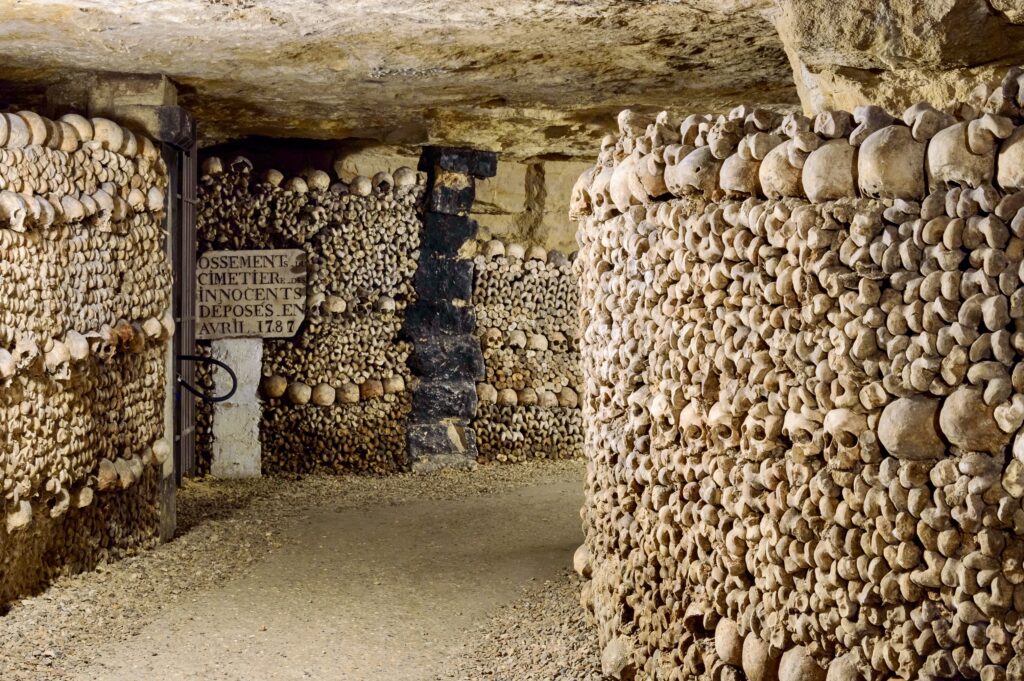
Here are some things to expect on a Paris Catacombs visit.
As you might anticipate, it’s cold below ground in the Catacombs. If it’s summer, bring something to put over your sundress or sleeveless top. The Catacombs are supposedly maintained at 57 degrees, but it felt colder than that on a winter visit to me.
You should also expect it to be humid and a tad smelly (perhaps from stale air).
It should go without saying that you can’t touch the bones at all. They’re very fragile. Taking bones is also considered grave robbing. Instead, you can buy a skull mug at the gift shop.
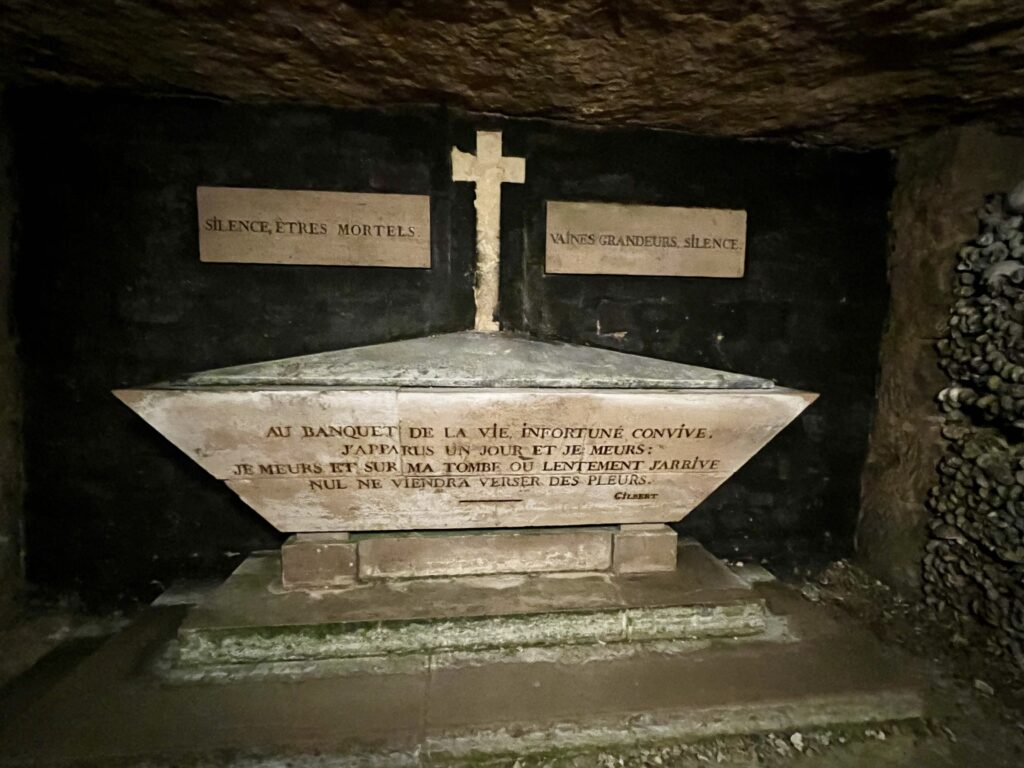
In fact, if you have a small backpack with you, you’ll have to wear it in front or carry it with your hand to avoid inadvertently bumping into the bones. Signs warn that bags can be checked at the exit.
You cannot bring large backpacks or luggage. And there are no cloak rooms for storage.
You can take photos, but you can’t use a flash.
If you are prone to claustrophobia, there may be a better destination for you. Though I thought, despite the low ceilings, that there was plenty of room to move around.
The Paris Catacombs were built for people in the 18th century, who weren’t as tall as most of us today. The height of the tunnels is approximately 6 feet. So, if you’re tall, you’ll need to bend down a bit and watch your head.
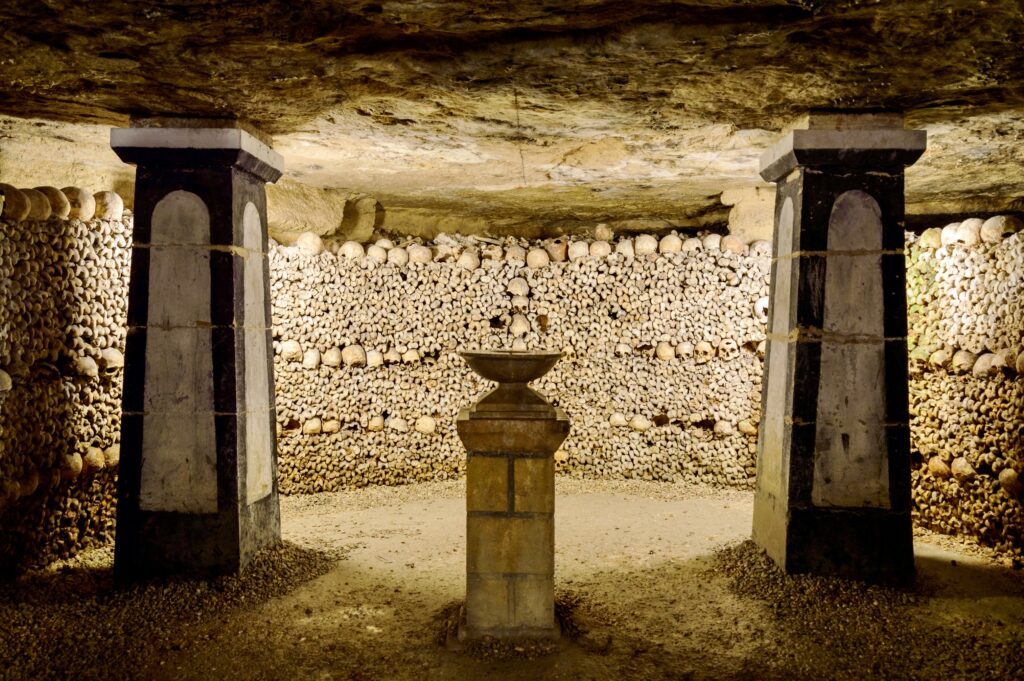
The paths are pebbly and uneven. If has been raining, they may be damp. So wear comfortable shoes and take care.
Unfortunately, the catacombs are not accessible and there is no wheelchair access or elevator. To visit, you’ll need to be able to navigate up and down the spiral staircases.
I hope you’ve enjoyed my guide to the Paris Catacombs. You may find these other Paris travel guides and resources useful:
- 5 Day Itinerary for Paris
- 3 Day Itinerary for Paris
- 2 Day Itinerary for Paris
- Tips for Planning a Trip to Paris
- Tourist Traps To Avoid In Paris
- Top Attractions in Montmartre
- Top Attractions in the Marais
- Best Museums In Paris
- Hidden Gems in Paris
- Best Churches in Paris
- Best Things To Do in Paris in Winter
- Guide to the Opera District
- Secret day trips from Paris
If you need a guide to the Catacombs of Paris, pin it for later.

Leave a Comment Cancel reply
Save my name, email, and website in this browser for the next time I comment.
Last Updated on November 27, 2023 by Leslie Livingston

Paris Catacombs: Extraordinary Underground Activity

- Post published: 16 December 2023
The catacombs of Europe’s major cities have become an iconic tourist attraction. The catacombs of Paris are a perfect example. Millions of visitors discover them every year.
If you’d like to visit the Catacombs in Paris, read the following article. It contains all the important information you need.
Paris Catacombs: an original tour of the underground tombs of Paris
The Catacombs of Paris are an exploration beneath the city’s streets, taking you down into the capital’s dark but fascinating history.
As you walk through the 1.7 km labyrinth, you’ll discover some of the six million bones that were transferred here at the end of the 18th century because of the unhealthy state of Parisian cemeteries.
This labyrinthine network is a silent witness to a bygone era. Its mystical atmosphere and macabre beauty create a truly unique experience.

The eternal calm of these ancient limestone quarries, the dim light dancing over the piles of bones, all contribute to an experience that remains etched in the memory.
Highlights of a visit to the Paris Catacombs
- A unique and mysterious atmosphere to discover once in a lifetime
- The facilities make it easy to visit
- The chance to take memorable photos
- The audio tour makes for a more attractive visit
Disadvantages of the Paris Catacombs
- Online booking is mandatory
- The price is high for a short visit
What can you see in the Catacombs of Paris?
In the perpetual silence and cool depths of Paris, the Catacombs of Paris offer a surprising spectacle.
Here’s a closer look at what you can see and do on this underground tour.
Entry and descent
As soon as you descend the long spiral staircase, you’re immediately greeted by the sense of mystery that pervades the Catacombs. This 131-step descent is a journey back in time , and sets the mood for the experience that awaits you below.
Le Parcours du Carrier
Before entering the ossuary itself, you walk along the “Parcours du Carrier.” It’s a tribute to the workers who extracted the limestone used to build Paris’s famous monuments. Wall inscriptions and sculptures bear witness to their hard work and dedication.
The Passion Crypt
In the Passion Crypt, the bones are arranged in the shape of a heart, with a cross in the center. It’s a striking sight and one of the most artistic examples of bone arrangement in the Catacombs.

It’s a unique and impressive formation of bones forming an immense pillar, nicknamed the “Barrel.” You can’t help but marvel at the way these bones have been meticulously stacked.
Galleries and Alcoves
As you wander through the galleries, you’ll discover numerous alcoves full of bones, arranged in unique ways . The names of the original Parisian streets are engraved in the stones, giving an idea of the location of the cemeteries from which the bones originate.
Inscriptions and Poems
Along the way, you’ll find inscriptions and poems engraved in stone, some dating back to the 19th century. They add a philosophical depth to your visit, encouraging you to reflect on life, death and the ephemeral.
La Salle de Gilbert
This room is dedicated to François Décure, nicknamed “Gilbert,” a miner who worked in the Catacombs in the 18th century. Here you’ll find his bust carved directly into the stone wall.
How much does admission to the Paris Catacombs cost?
You must reserve your time. If you arrive without a ticket, entry will not be possible.
Admission is:
- 29€ for adults
- 23€ from 18 to 26 years old
- 10€ from 5 to 17 years old.
Check out the current price on GetyourGuide .
How long does a visit to the Paris Catacombs last?
The visit is short. On average, visitors spend an hour in the Paris Catacombs.

Where are the Catacombs of Paris located?
How do I get to the Catacombs of Paris?
For public transport, the nearest metro station is “Denfert-Rochereau,” served by lines 4 and 6 and RER B.
By bus, take lines 36 and 68.
If you are arriving by car, pay parking is available nearby on boulevard Saint-Jacques.
What are the opening hours of the Paris Catacombs?
The Paris Catacombs are open every day except Monday .
Opening hours are from 10:00 to 20:30.
My opinion of the Paris Catacombs: is it a good visit?
When I entered the Catacombs, I immediately felt transported to another world.
The style of the Catacombes de Paris is strange. Making art with real skeletons is surprising. Sure, the atmosphere can seem macabre, with all those bones lined up as far as the eye can see, but I have to say there’s a certain beauty to the vision .

Wandering the long underground corridors, observing the various inscriptions on the walls, discovering rooms like Gilbert’s or the Passion Crypt, made me realize how rich in history and emotion this place is.
The fact that you’re walking among the remains of millions of French people, some of whom may well be my elders, is not something to be taken lightly. For this reason, I think it’s important to do it with dignity, and not to take selfies next to human skulls…
The audio tour is a real plus, as it provides information about the site. Indeed, there are no information panels in the Catacombs.
However, I do have one reservation about the length of the visit. Indeed, the visit to the Catacombs seemed a little short to me, especially considering the price of the ticket. A reduced price of ten euros would seem more coherent.
However, a visit to the Catacombs, whether in Paris, Rome or any other major European city, is a must at least once in a lifetime.
What else can you do near the Paris Catacombs?
There’s no shortage of things to do in Paris. Among all the things to do, I recommend the nearby Catacombes de Paris:
- Parc Montsouris
- The Cartier Foundation for Contemporary Art
- Paris Observatory
- The Butte-aux-Cailles district
- The Great Mosque of Paris
- The Museum of the Liberation of Paris
- The Galleries of the Jardin des Plantes.

You Might Also Like

Dive into Omega Mart’s Fantastic Universe in Las Vegas

Hot Air Balloon Ride in Annecy: Feedback and Pictures

Europa-Park | Germany’s Best Amusement Park

- Virginia Beach
- History & facts
- Famous people
- Famous landmarks
- AI interviews
- Science & Nature
- Tech & Business
Discover something new everyday
- Famous places
- Food & Drinks
- Tech & Business
Famous places , Paris , Travel
The Best Way to Visit the Paris Catacombs

Read Next →

Paris - Food & restaurants
Top 20 non-touristy restaurants in Montmartre

Barcelona - Activities & Things to do
20 Best Thrift Stores of Barcelona (with map)

Paris - By month
10 Best Techno Clubs in Paris
A short history lesson.

How to Get to the Paris Catacombs

Is it worth visiting the catacombs in Paris?
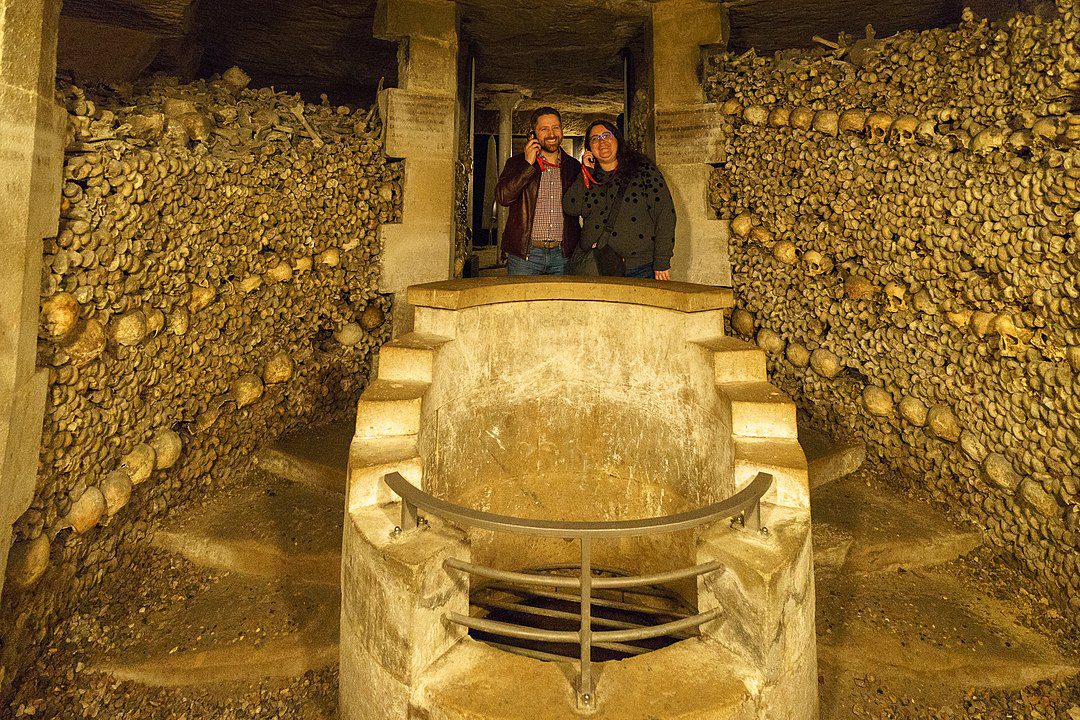
Dale Cruse from San Francisco, CA, USA , CC BY 2.0 , via Wikimedia Commons
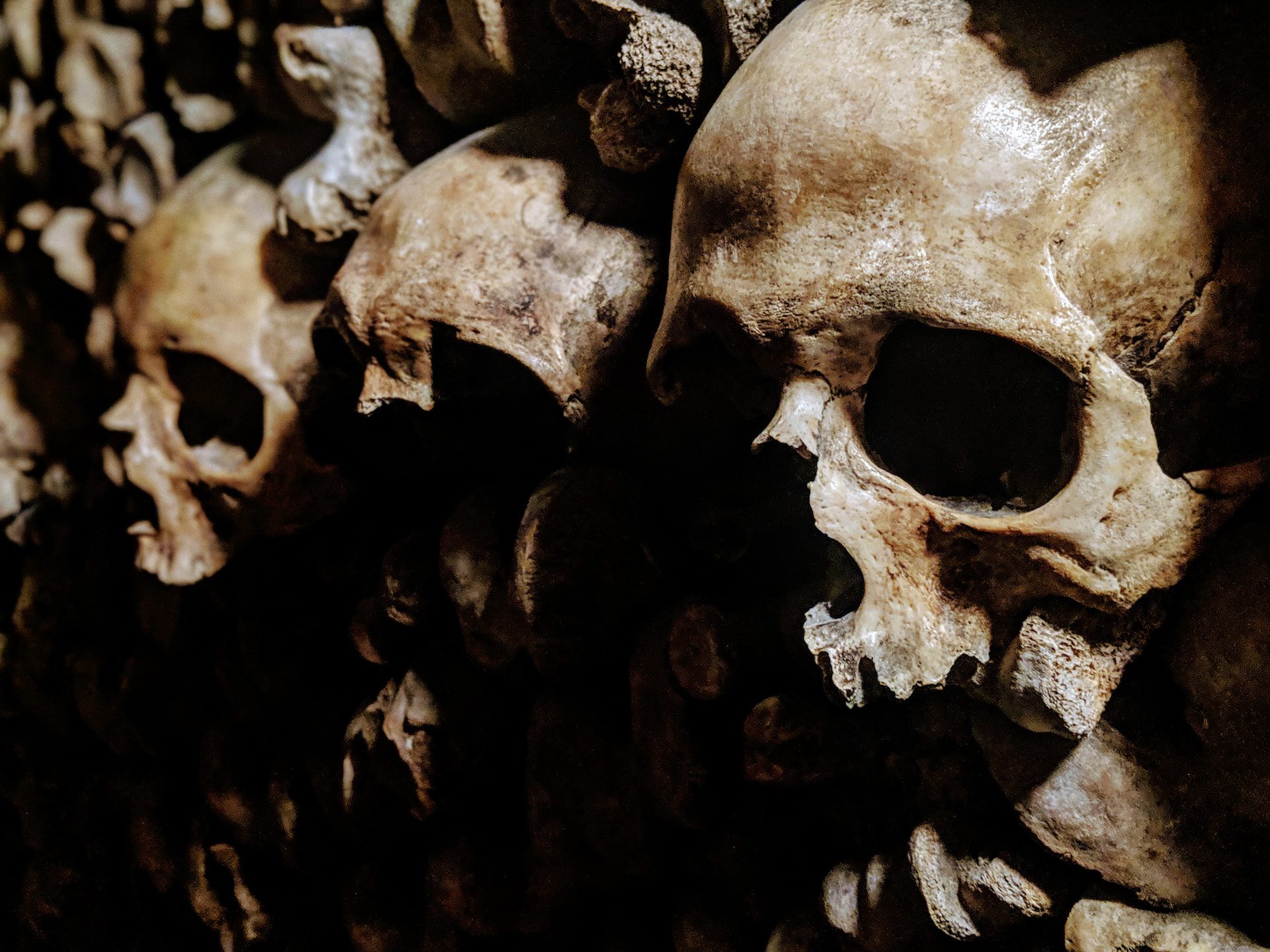
Photo by Yann Schaub on Unsplash
A few tips to make sure you enjoy the Catacombs in the best conditions

- First, you need to know that the walk through the Paris Catacombs is two kilometers long, and the way can sometimes be a bit slippery and uneven. You will be walking for forty-five minutes, so put on some practical shoes. Ladies need to forget about their heels for this kind of adventure, where comfort is key!
- Also, bring a jacket, because it can get a little cold underground. The temperature is constant at 14ºC, 57.2 ºF. Then, you should also know that you will only find some toilets at the end of the tour. So, make sure you use the bathroom before entering the Paris Catacombs .
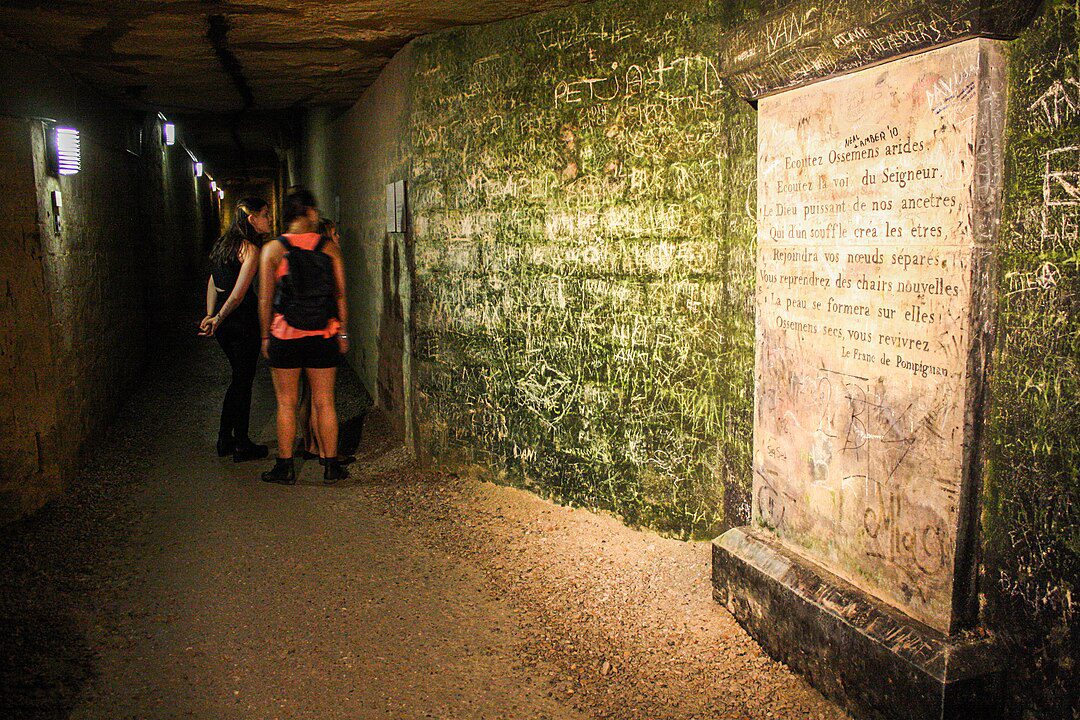
Shadowgate from Novara, ITALY , CC BY 2.0 , via Wikimedia Commons
- I highly recommend psychological preparation for the experience before you come to this place. Let me remind you that you will be walking past hundreds of humans. Some people who are sensitive to seeing human bones may find it uncomfortable. A little advice, take a tour guide with you. But if you are confident enough to stand next to a human skeleton, you are also reminded to respect the rules. You will have fun .
- Since only 200 people are allowed inside at a time, you might have to wait for some time. So, the best you can do is to buy your tickets in advance. This presents some advantages: you will be able to enter directly, without queueing, and it includes an audio guide, which will cost 29 euros. Avoid the long queue. Don’t go for the last admissions if you have limited time. If you rather buy the tickets on-site, it will cost 13 euros for adults, 11 euros for people aged between 18 to 26 years old, and 5 euros for children. On-site, if you want an audio guide, an extra five euros will be charged.

The reason why you will like it

Can you legally go into the catacombs of Paris?
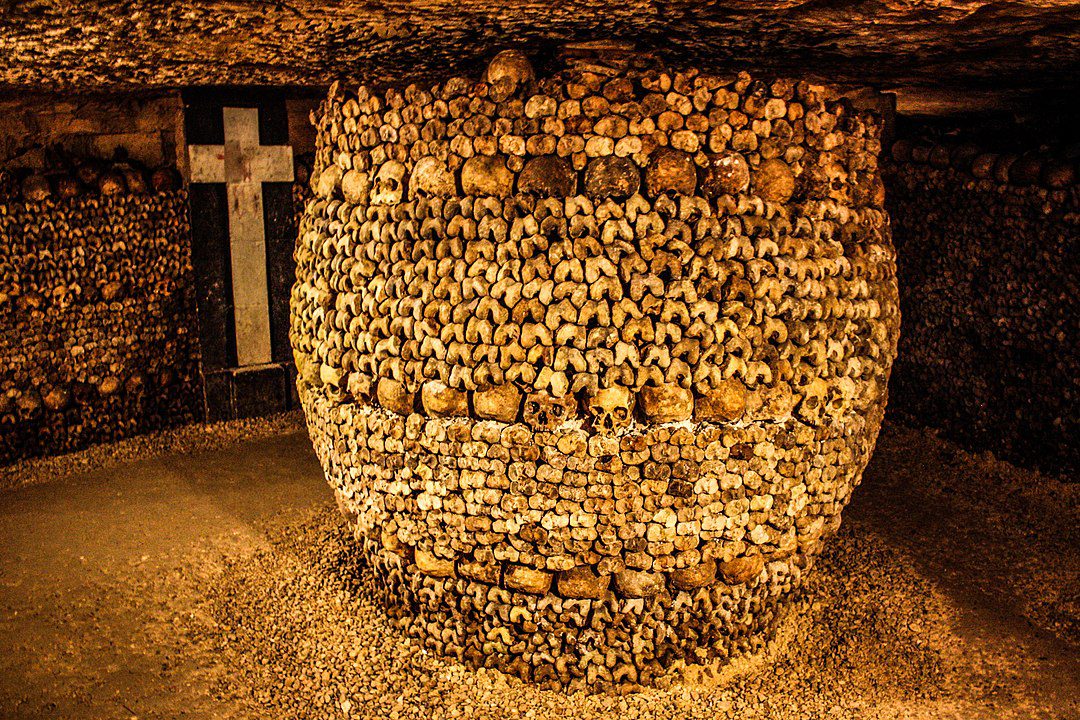
How to buy your Paris Catacombs tickets

Photo by thapanee srisawat on Unsplash
- You first have to go to Paris Catacombs’ official website .
- At the top of the page, you will see “ Purchase a ticket ” Click on this message. A new tab will open, because you will be redirected to another page carrying out the purchase of the ticket.
- On this new page, at the top on the right, pick the English language.
- Scroll down to the “ Museum Offer ” section. You will have two offers: the first one is priority access for adults and an audio guide which costs twenty-nine euros. Then, the second option is priority access for children which costs five euros, which is only available for kids aged between four and seventeen years old.
- When clicking on “ Buy “, you will once again be forwarded to a new page. On this page, you will have to select a date for your visit and a timeslot.
- Then, you’ll have to scroll down a little further down and pick the number of tickets you wish to buy.
- The total cost will appear. All you have left to do is to click on “ Add to cart “.
- Your order summary will be updated and you will have to pursue the purchase.
- To make the purchase, your login information will be asked. You have to create an account on Paris Musées to buy the Paris Catacombs tickets, which is a great idea since you will be able to buy tickets for many other museums in Paris.
- Once you’ve finished your Paris Catacombs tickets purchase, they will be sent to you by e-mail. Please, make sure you write your e-mail right.
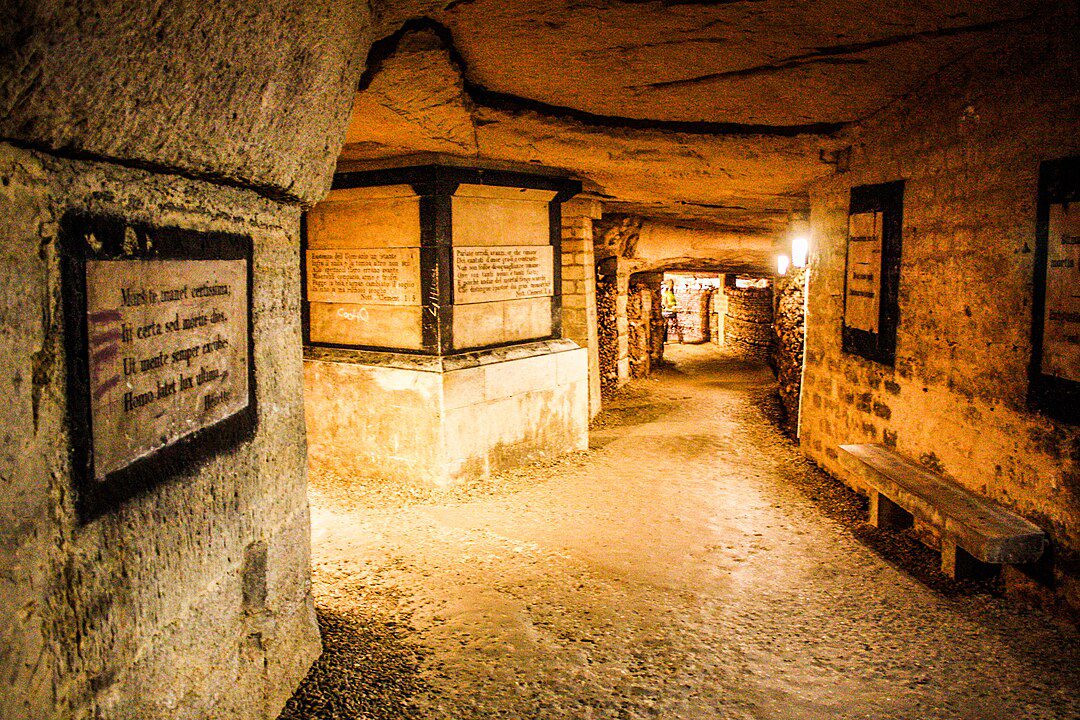
Planning a trip to Paris ? Get ready !
These are Amazon’s best-selling travel products that you may need for coming to Paris.
- The best travel book : Rick Steves – Paris 2023 – Learn more here
- Fodor’s Paris 2024 – Learn more here
Travel Gear
- Venture Pal Lightweight Backpack – Learn more here
- Samsonite Winfield 2 28″ Luggage – Learn more here
- Swig Savvy’s Stainless Steel Insulated Water Bottle – Learn more here
Check Amazon’s best-seller list for the most popular travel accessories. We sometimes read this list just to find out what new travel products people are buying.
Anna was born and raised in Paris. She studied Languages in Paris and Social Communication in Lisbon. Anna also lived in Madrid for a year. She has been to many places and hopes to go places. Wherever she goes, she always tries to experience each city as locals do. Anna usually has croissants for breakfast in Paris, takes a walk in Camden Town in London, eats lunch in Chiado in Lisbon, and enjoys Madrid's nightlife.
Hello & Welcome

Popular Articles

Top 20 Streets to See in Paris

Paris in two days

Top 15 Things to do Around the Eiffel Tower

The Best Way to Visit Paris Museums

Top 15 Fashion Stores in Le Marais
Visit europe with discover walks.
- Paris walking tours
- Montmartre walking tour
- Lisbon walking tours
- Prague walking tours
- Barcelona walking tours
- Private tours in Europe
- Privacy policy
© 2024 Charing Cross Corporation
The catacombs: what to see? What history?
- Sunday, December 17, 2023
There may be translation errors. Our translator wanted to visit the catacombs outside the official visiting zone and got lost. We may never find him again...
What are catacombs?
For centuries, as far back as Roman times in fact, the soil of Paris has been dug to extract stone for the city's main monuments . The stones for Notre Dame de Paris and the Louvre, for example, come from these quarries. Over time, kilometers of multi-level galleries were dug beneath the French capital. The total length of these galleries beneath Paris is estimated at over 300 kilometers, and their depth at around 20 meters below ground level. Some of them were destroyed when the Paris Metro was built at the end of the 19th century. Some of these quarries were destroyed for safety reasons. Others still exist. The famous Paris mushrooms have long been grown here. In 1885, there were 300 growers, producing 1,000 tons of mushrooms a day. Today, 6 of them continue the tradition.
The world's largest ossuary
And, from the end of the 18th century until 1861, part of them was used to store the bones of millions of Parisians who had died over the centuries when the Parisian cemeteries were closed, including the largest and most famous of them all, the Cimetière des Innocents. Today, the visible part of the catacombs is just over a kilometer long.
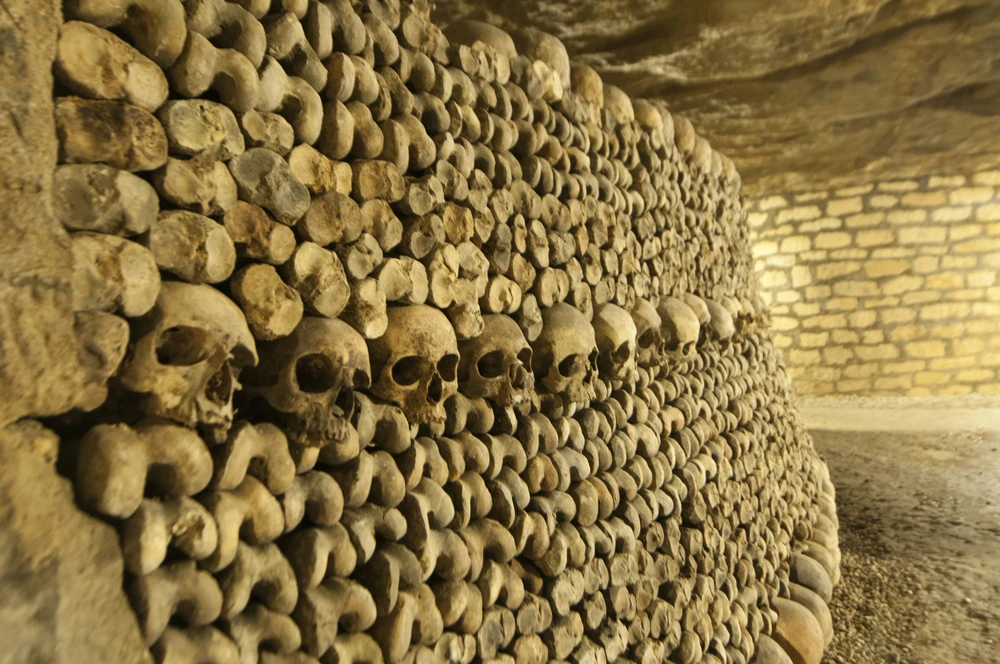
The remains of almost 6,000,000 people are carefully stored in the catacombs of Paris. Photo: dépositphotos.com
What can you visit?
To enter the catacombs, you have to climb down a hundred or so steps, covering 1.7 km of gallery for a total of 11,000 M2 . Beware, the ceilings are low! 1m80 maximum. The temperature is always the same: 14.5°C. Above all, don't visit any part other than the "official" one. Every year, the Paris fire department rescues curious visitors lost in the catacombs. Remember: there are 300 km of galleries...
We see hundreds of thousands of bones, neatly arranged. Skulls together, tibias together, and in rows. The site is decorated with columns carved in stone. There are a few funerary monuments , such as ancient or Egyptian-inspired tombs. There are also place names to help you find your way around, such as "the sarcophagus of the lachrymatorium" or "the Samaritan fountain". There are also a few "cabinets of curiosities" devoted to a specific theme, such as mineralogy or medical curiosities like original bones. Viscount Louis-Etienne Héricart de Thury (1776-1854) was responsible for creating the catacombs as we know them today. It was he who wanted to set up a tour, sculptures and science before opening the site to the public in 1809.
Décure's work.
Décure, a soldier from the late 18th century, employed as a quarryman in the catacombs, also left some sculpted works. Fascinated by the place, and by art, this former soldier spent several years carving stone to decorate the place. If you're Spanish, you'll discover the citadel of Port Mahon, in the Balearic Islands, where Décure took part in its siege in 1756. Very precise and meticulous, he also decorated the floor with black flint stones. His passion ultimately cost him his life , as he was buried in 1782 while digging a staircase to his works. The ceiling collapsed.
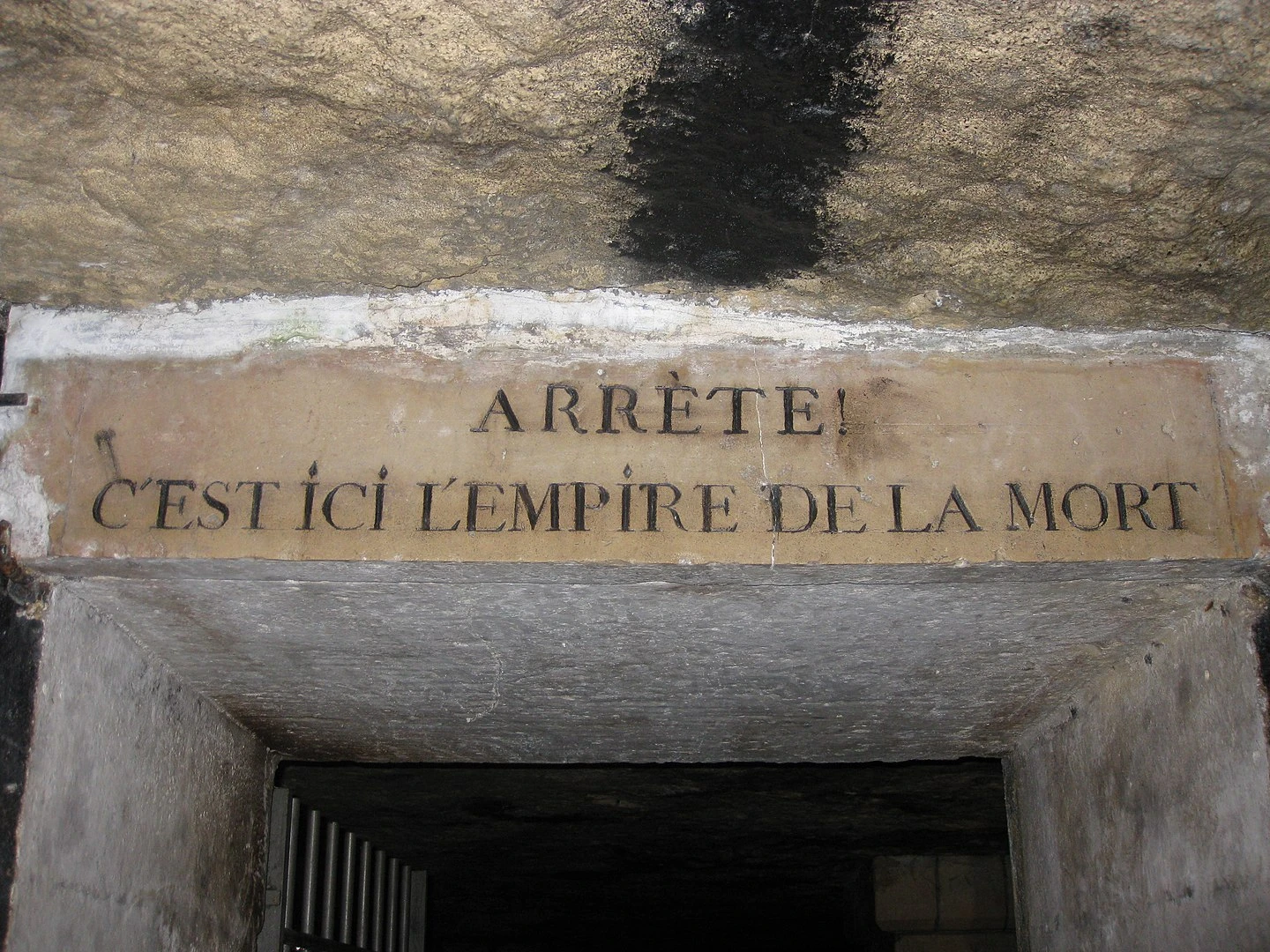
We come across monuments and even signs with thought-provoking phrases, such as this one from the Aeneid. Photo chosen by monsieurdefrance.com: By Deror avi - Own work, CC BY-SA 3.0, https://commons.wikimedia.org/w/index.php?curid=6085673
A place for science in the 19th century
The catacombs have been used for numerous experiments . In 1813, Louis-Etienne Héricart de Thury (1776-1854) experimented with launching fish into this pitch-black world. They became blind (and did not reproduce, so there are no fish in the catacombs). The site was also used by speleologists , with Armand Viré (1869-1951) revealing the existence of crustaceans in the waters of the catacombs. Jacques Maheu (1873-1937), an important botanist, studied the flora of caves and the night. In 1861, Nadar (1820-1920) worked on night photography with artificial light. Since exposure times were very long in the mid-nineteenth century, he was obliged to use mannequins to represent the workers.
Millions of bones, including those of
We know that among the bones in the catacombs are those of many of France's most famous historical figures . The sepulchres having been destroyed, their bones have joined the bones of millions of other anonymous figures. So, without recognizing them, you'll probably come across the bones of writer François Rabelais (1494-1553), Jean de la Fontaine (1621-1695), author of the fables that bear his name, or Charles Perrault (1628-1703), author of the famous Perrault fairy tales. This is also the resting place of Jules Hardoüin-Mansart (1646-1708), architect of Versailles, and Salomon de Brosse (1571-1626), architect of the Palais du Luxembourg and the Parlement de Bretagne in Rennes. It is also where the remains of many revolutionaries are buried, including Danton (1759-1794), Camille Desmoulins (1760-1794) and Robespierre (1758-1794).
The origin of the catacombs: the cemetery of the innocent.
A very old cemetery.
The catacombs were created in 1786. Why were they created? Because the notorious cemetery of the innocent had to be emptied. Paris' largest cemetery was literally overflowing. The dead from 22 Parisian parishes were buried there - in other words, the entire center of Paris. Then there were the plague victims, the drowned and the anonymous dead. An estimated 2 million Parisians were buried there . It was on May 7, 1780, when the wall of a nearby cellar collapsed under the weight of the cemetery's bones, that the authorities decided to close this burial site dating back to Merovingian times (8th-9th centuries), and which had served as a burial ground for Parisians for 1,000 years . Bordering rue Saint Denis and the church of Saint Innocents, which gave it its name, it was dedicated to the victims of King Herod when he decided to have all Jewish first-borns killed after learning from the Magi that a king had been born on Christmas Eve. It disappeared in 1786, when the cemetery was evacuated and destroyed to make way for a ... place, which for a long time was the innocents' market square, before the Halles were built, and which today is called Place Joachim du Bellay. It features the famous Fountain of the Innocents, built in 1559 at the behest of King Henri II of France by architect Pierre Lescot (1515-1578) and sculpted by Jean Goujeon (1510-1567).
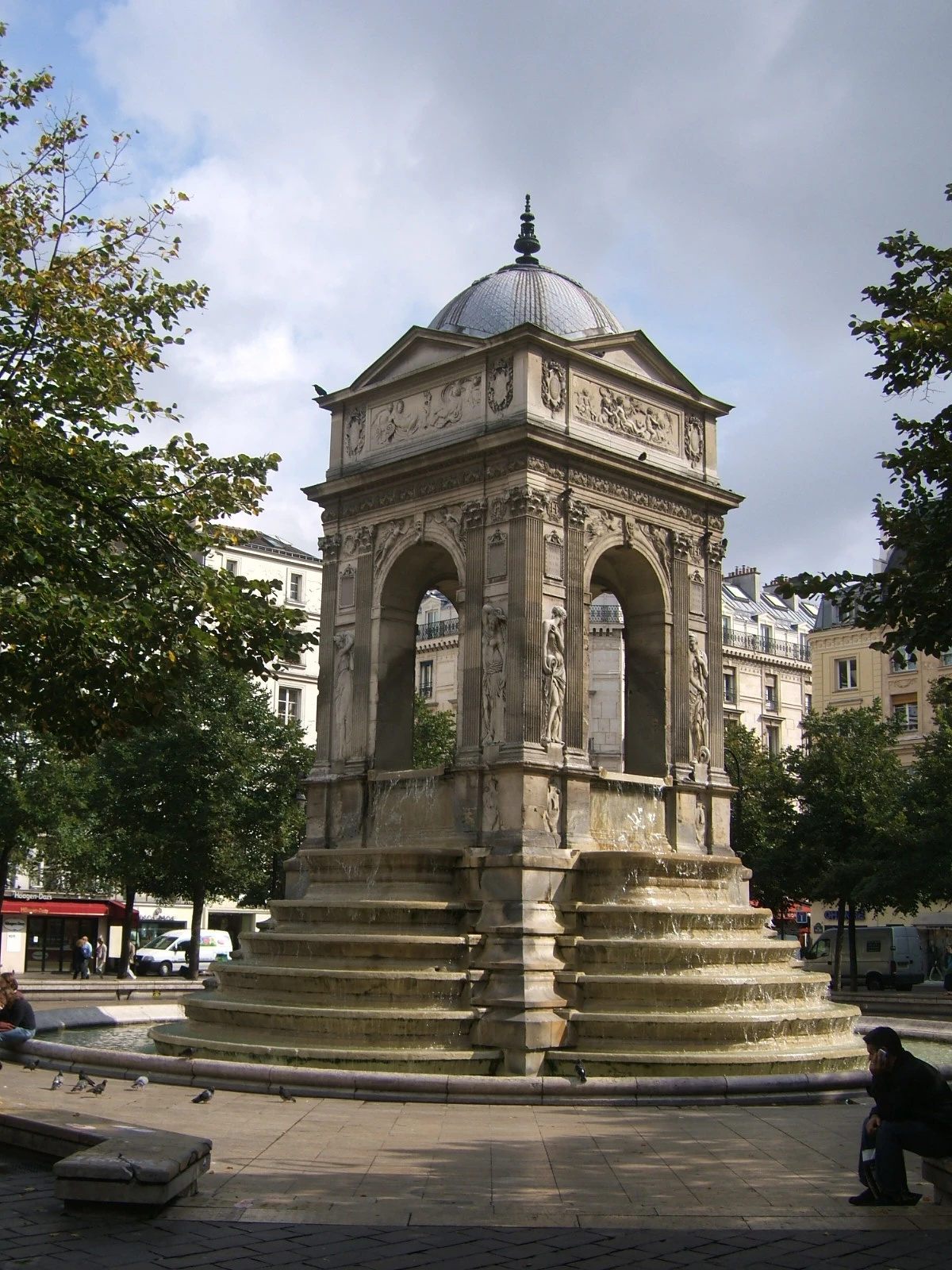
the Fountain of the Innocents today. Photo chosen by monsieurdefrance: Kmlz on en.wikipedia, CC BY-SA 2.5 <https://creativecommons.org/licenses/by-sa/2.5>, via Wikimedia Commons
A very special cemetery
Buried here were the dead of France's largest city, and one of Europe's largest (2nd only to London), so the cemetery was packed to the rafters . Seventeenth-century Parisians claimed that the soil in the Cemetery of the Innocents could dissolve a body in 9 days . The surrounding water was contaminated, and it's even said that the air in the cellars around the cemetery was so foul that candles went out by themselves. The rich were buried in individual graves in the center of the cemetery, in wooden coffins, while the very rich were buried in the church. For the poor, the sides, mass graves and a shroud. With so much burial, the cemetery floor ended up several meters higher than the surrounding pavements, even if some pits were periodically emptied to store the bones in a charnel house on the side (financed by Nicolas FLAMEL, the famous alchemist). A danse macabre adorned the walls. That said, as Paris is an amazing city, and space has been in short supply for centuries, many of the pits were occupied not only by bones, but also by fashion boutiques in the 17th century.
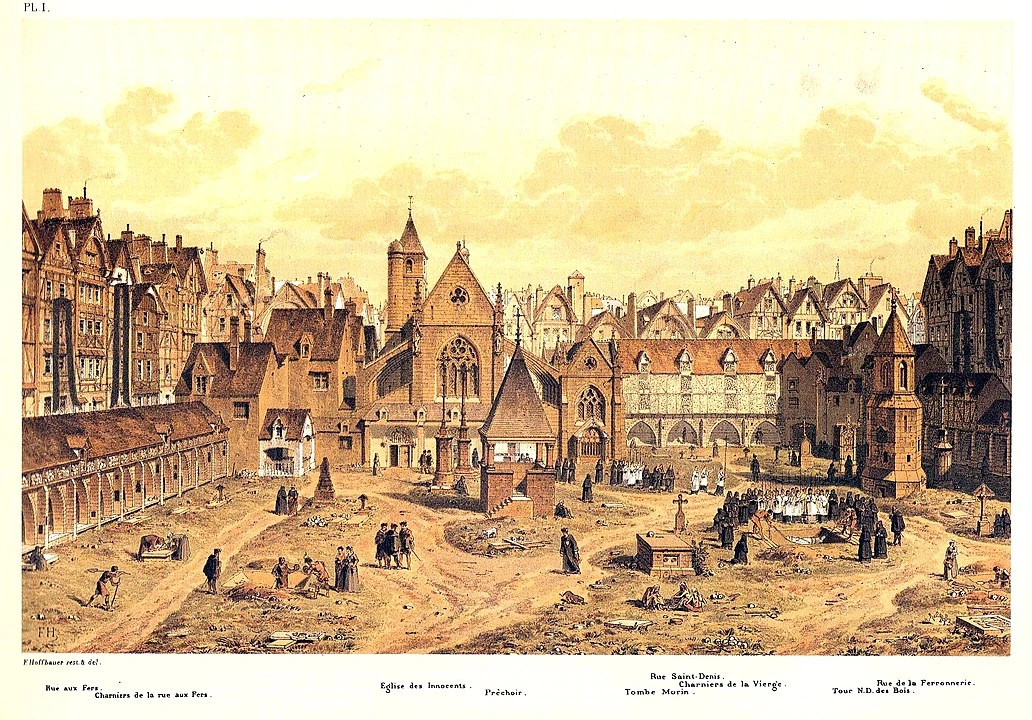
The cemetery of the innocent in Paris in the 17th century. Illustration chosen by monsieurdefrance.com: By Theodor Josef Hubert Hoffbauer - Own work, scan by Jebulon, Public domain Wikicommons
The Cemetery of the Innocents was also famous for its two reclusoirs, in which religious hermits shut themselves away from the world . In these stone cels, with a single opening consisting of a window and its grate, the recluses were walled up alive, most of them in their entirety. One woman, however, was condemned to be locked up rather than burned alive for adultery and having her husband murdered. The recluses were provided with food by donations from passers-by through the window, and remained there until death.

Where are the catacombs of Paris?
How to get there :.
1 Avenue du Colonel Rol-Tanguy, 75 014 PARIS
Line B Denfert-Rochereau station
Lines 4 and 6 Denfert-Rochereau station
38 / 59 / 64 / 68 / 88
83 Boulevard Saint-Jacques (paying).
Tuesday to Sunday : 9H45 - 20H30 except special evenings. Closed on Mondays, January 1, May 1 and December 25.
Official website:
For up-to-date information and opening hours, visit the official catacombs website .
Honestly, it's quite expensive, since for the same price you can visit the Louvre or Versailles . Please note that what I'm giving you here are the 2023 prices . To be sure of the rates, consult the official website . You'll need to book in advance, as on-the-spot sales are not always possible due to overcrowding.
Full price: 29 euros (with audioguide).
Reduced rate (including 18-25 year-olds, students...): 23 euros (with audioguide).
Children (aged 5 to 17): 10 euros.
Please note that there are no lockers or luggage storage.
Jérôme Prod'homme
Jérôme is "monsieur de France" the author of this site.
Related posts
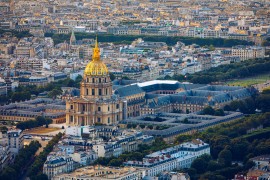
The invalids in Paris: what to see? Which history?

Montmartre: one of the emblems of Paris
France Travel Blog
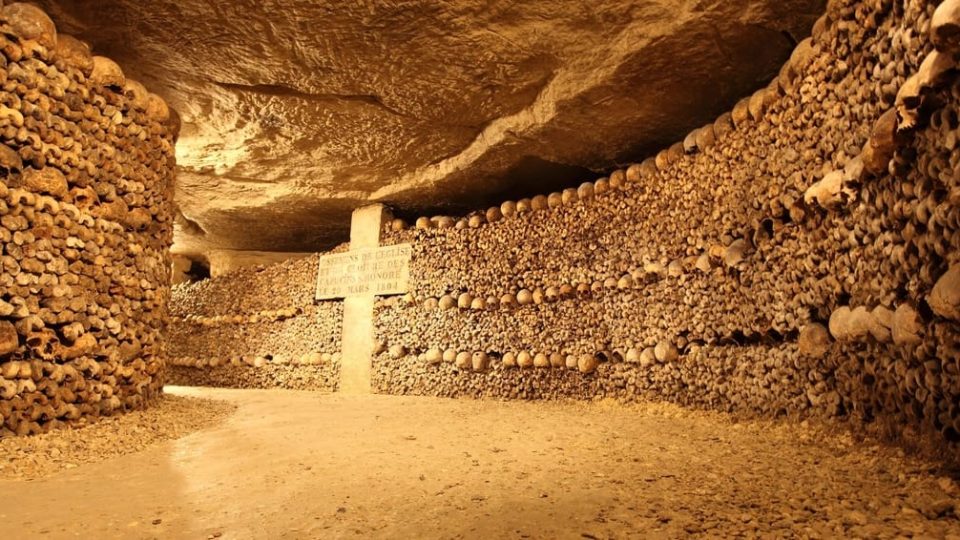
Why You Should Visit the Catacombs of Paris
There is more to Paris than the scintillating fares, wonderful treats, and phenomenal monuments. There are secrets below the city to discover which many tourists have overlooked for far too long. Every day, many locals and visitors are oblivious that they roam directly above a long strip of underground tunnels that contain 6 million skeletons (and an interesting story as to how they got there).
This is about a dark history that usually goes without observation as busy people walk to work and go about their daily businesses while a very mysterious world is wedged just beneath them. These tunnels are referred to as the Paris Catacombs, and there is usually a long queue who wants to see the creepy world trapped underneath. To beat the queue, ensure you book online.
We hope you won’t pass on this gripping encounter with history when next you visit the French capital.
Here are why you should visit the Paris Catacombs:
It’s the world’s largest underground necropolis.
The Catacombs are the real hidden parts of Paris, and the entire experience is a solo tour where one gets to walk through at their own pace. When you get in, you enter a long chain of tunnels, bearing signposts and history boards telling you a bit more about the place.
Just about 8 minutes from the time you enter, you will reach the real Catacombs, which is an underground cemetery. Perhaps you have not seen such a collection of the human skeleton before. Here, there are countless skulls perfectly arranged to form a continuous wall of skeleton pieces. Things can quickly become shuddering upon the realization that the skeletons used to be living people. Phew.
It could, in fact, feel like a cross over between reality and a scene from Pirates of the Caribbean. And if you feel no snatch of fear, you can dare to take pictures of yourself and the bones. The questions remain, though, who are these people from, and how did they get here? We shall discuss that shortly.
Where the Bones Come From
Sometime in the 18th-century in Paris, there was an overflow of corpses. A place, in particular, the Cemetery of the Holy Innocents located in the city center, has many dead bodies. And since the Middle Ages, the corpses of most Parisians were buried in this place, which explains the mass over-crowding here.
When the French Revolution occurred, the constant cramming of dead bodies in Paris became a statewide concern even in other cemeteries. It became a matter of public health, so the bodies found a permanent home.
The city’s neglected underground quarries were forgotten until the authorities turned them into an ossuary in 1786. The Cemetery of the Holy Innocents was the premiere cemetery to be emptied to have all the bones transferred to the Catacombs.
The quarries were reinforced to make them safe. Subsequently, the countless bones were delicately stacked from various cemeteries around the city, which were demolished or closed as soon as they were empty.
The Arrangement of Bones
As you walk through the maze of tunnels, you will see that the bones are carefully arranged. Most commonly, you will observe that the walls are made of shin bones topped with the skulls of human beings. At the back of these well-arranged barriers, other bones are stacked more dangerously.
You will even find some spots where the bones are organized more aesthetically, in the shape of crosses and hearts. You will marvel at how stunning the bones could be. If you take a guide along, the poems and psalms carved into the signs will be explained better.
Further History
The Catacombs is a massive maze of tunnels, and no one knows how many chambers or tunnels are there. Before the bodies were moved to the site, the quarries were expanded over the city center. Much of the limestone that built Paris was gotten from these mines. However, as Paris grew, it expanded to where the quarries were, hence, the abandonment of the quarries.
In the course of the Second World War, the French resistance used the tunnels, and rave parties bloomed there in the 1990s. Victor Hugo, Les Misérables author, used his knowledge of the tunnels in his book. Communards killed a group of monarchists in one of the tunnel system’s chambers in 1871. Despite the intriguing and dark history, a section of the tunnel maze is open to the public, and that is the popular Catacombs of Paris.
Right from the day they were completed, the Catacombs have been an object of sheer curiosity, even for royals. It will be recalled that in 1787, Lord of d’Artois (future King Charles X) went there in the company of ladies from the court. Emperor of Austria, Francois the 1st, also visited and explored the Catacombs. And in 1860, Napoleon III visited too with his son.
The walls are covered in graffiti that dates back to the 18th-century. It was towards the end of the 18th-century that the place became a tourist attraction and have been open to the public regularly since 1867.
Facts about the Catacombs of Paris
- Their depths are equivalent to a five-story building
- The place has a 2 km-long area
- Exploring the place is a 45-minute venture
- The constant temperature here is about 14 Celsius
- The ossuary’s surface area is about 11,000 square meters
- The Catacombs is home to over 6 million dead Parisians
- In the Second World War, both sides used the place for underground operations. While the French Resistance used the tunnels for navigating the city unsuspected, the Germans built hidden bunkers
- Secret, unmapped pools exist in the Catacombs that explorers visit and swim in. Be guided- lots of people have been reported missing, so do not go on a solo exploration here.
How to Visit the Catacombs of Paris
To get there, you can take the subway and the RER to Denfert-Rochereau. Alternatively, you can use Bus 38 and 68. The museum is open from Tuesday to Sunday from 10 am to 8:30 pm.
The queue can be frustratingly long, so reserve a spot online or by getting there early. Tickets come with discounts. In addition, there are audio guides available in various languages.
There are two types of tickets: pre-purchased and stand-by tickets. Pre-purchased tickets afford you the chance to skip the queue and an audio guide for adults. However, the tickets are expensive. Children between 4 and 18 cost around 5 euros and adults over 18 costs around 29 euros.
Buying stand-by tickets are the cheaper route. The disadvantage is just the long line. For children under 18, tickets are free and for adults 18 to 26 cost around 12 euros. Adults over 26 cost around 14 euros.
Why You Should Visit the Catacombs of Paris – Summary
The Catacombs of Paris are quiet, damp, dark, and a bit downright depressing yet incredibly interesting. The place should rank high among your list of the most unusual places to visit in Paris. To know the city better, a visit there will afford you that and the rare chance to see the beauty in skeletal chaos.
Peter is the editor of France Travel Blog. He has traveled to France many times and is ready to share the knowledge in this travel guide for France.
Related Posts

- Can You Drink Tap Water In Paris? (2023)
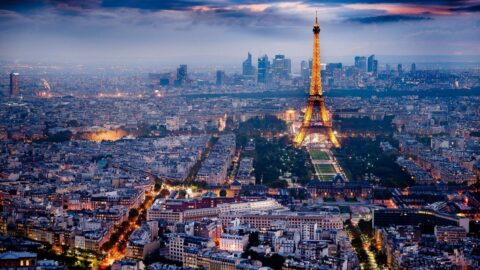
10 Must-Visit High-Quality Hotels in France for the Ultimate Luxury Experience

Paris Travel Blog: The Ultimate Paris Travel Guide

Best Swimming Pools in Paris
Recent posts.
- Marseille Unveiled: Immerse Yourself in the Charm of the Mediterranean with a Captivating City Break
- A Beginner’s Guide to Road Cycling
- 5 Things to Look for When Buying Digital Cameras
- How to Take High-Quality Photos: Essential Tips And Composition Rules to Consider
- Entertainment
- Things To Do
- Travel Guides
- Travel Ideas
Social Links

Are French Fries Really From France?

What Is The Latin Quarter Known For?

Best Beaches near Sete

Best Cost Cutting Tips When Traveling To Paris

Montpellier Travel Guide
Hit enter to search or ESC to close.
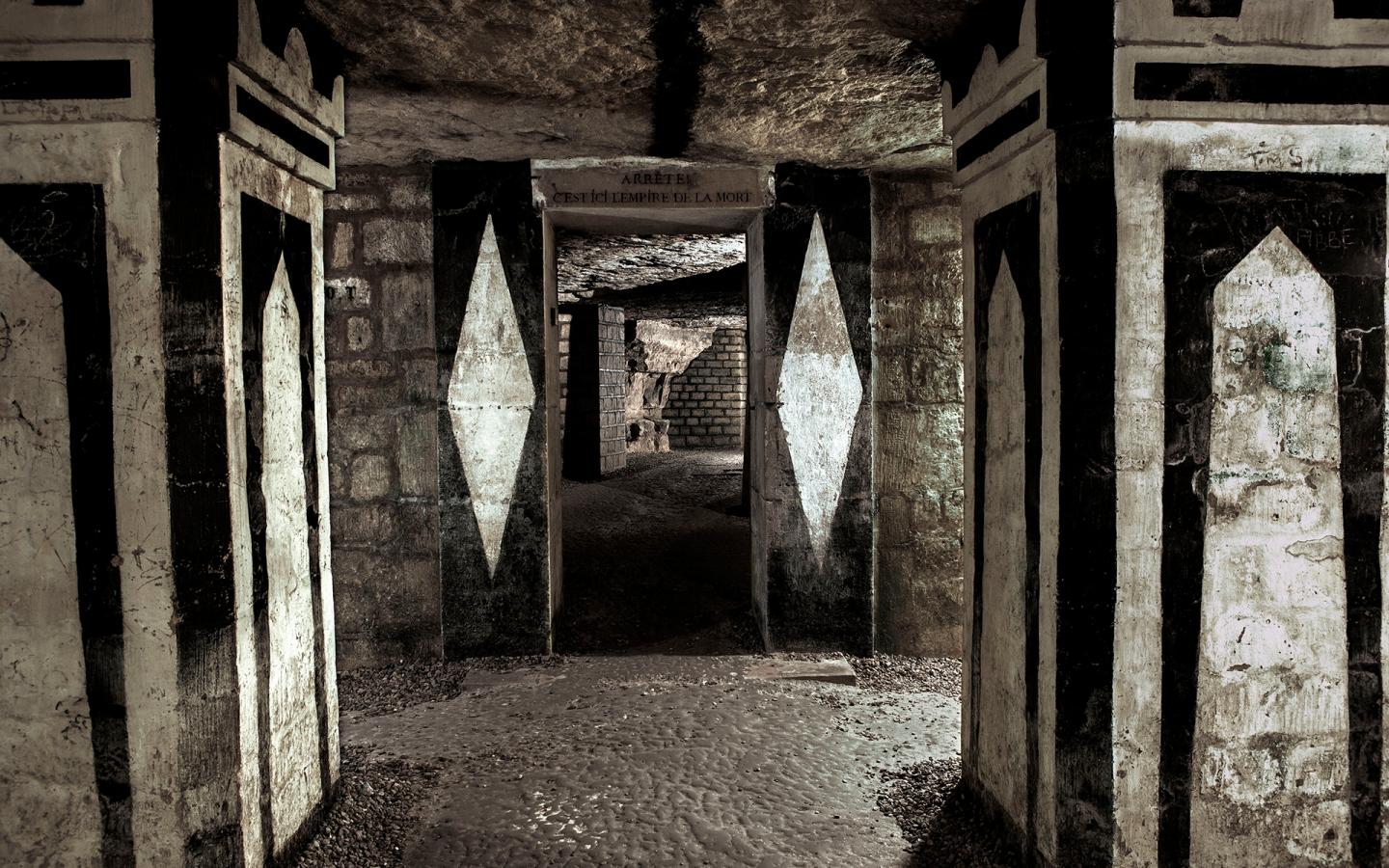
Virtual visit
Access the virtual visit of the catacombs of paris.

10 Catacombs & Ossuaries Around The World To Visit
- The Sedlec Ossuary in the Czech Republic features works of art made from human bones and is part of the oldest Cistercian monastery in the region.
- The catacombs of Paris are home to an exceptionally large amount of skeletons, with around 6 million skeletons in total.
- The Valley of the Kings in Egypt is a fascinating catacomb that provides insight into the rituals of ancient Egyptian civilization, housing tombs of pharaohs such as King Tutankhamun.
Catacombs and ossuaries can be rather creepy places to visit, but they also tell an important part of a place's culture and history. The most famous catacombs in the world must be the ancient catacombs of Rome , but there are plenty more around Europe and beyond.
Some catacombs are likely still lost to history, waiting to be rediscovered (new underground cities are still being discovered today, like the lost city of Matiate in Turkey ). Here are some of the most remarkable catacombs and ossuaries around the world to visit.
Related: Here Are 10 Roman Ruins & Structures Still In Use
Sedlec Ossuary
The Sedlec Ossuary is one of the greatest attractions to visit outside of Prague in the Czech Republic. The Seldec Ossaury is in the Cemetery Church and is part of the oldest Cistercian monastery in the region (and was founded in 1142).
Here, visitors can see human bones arranged into works of art adorning the church (including a remarkable coat of arms made from human bones).
- Location: Sedlec, Czech Republic (Near Prague)
Paris Catacombs
The catacombs or ossuaries of Paris are some of the most famous catacombs in Europe. The ossuaries occupy only a small part of the vast quarries under Paris and are home to some 6 million skeletons (an exceptionally large amount for any ossuary in the world).
The Paris Catacombs are open to the public, and there are public tours available.
- Location: Paris, France
Related: The Paris Catacombs Are The Final Resting Places Of Six Million People, And You Can Visit Them
Capuchin Catacombs
The Capuchin Catacombs are some of the most remarkable in Europe . Here, visitors can see many fully dressed mummies in the catacombs under the church in Sicily.
The first mummy was placed there in 1599 and the last in 1939, and there are some 8,000 corpses and 1,252 mummies organized into men, women, virgins, children, priests, monks, and professionals.
- Location: Palermo, Sicily
Valley Of The Kings
The Valley of the Kings is a series of rock-cut tombs built during the New Kingdom of Ancient Egypt over a period of 500 years. This is where many of the ancient Pharaohs were built (including King Tutankhamun), and the latest tombs found here were discovered in 2008.
The Valley of the Kings is one of the best catacombs in the world to visit to get a glimpse of the rituals of the ancient Egyptian civilization, and they date from after the Egyptians built the pyramids.
- Location: Thebes (Modern Luxor), Egypt
Related: Everything You Need To Know About Visiting Egypt's Mystical Valley Of The Kings
Mummy Museum Guanajuato
The Mummy Museum Guanajuato is one of the most unusual attractions in Mexico. The Mummy Museum Guanajuato has a number of naturally mummified bodies of people who died in an epidemic in the city in 1833.
Today, there are 59 mummies on display out of a total of 111 mummies.
- Location: Guanajuato, Mexico
Catacomb Of Callixtus
The Catacombs of Callixtus is perhaps the best known of the Catacombs of Rome. It is located along the Appian Way and is home to the Crypt of the Popes (dating from the 2nd to 4th centuries).
The Catacombs of Callixtus was only rediscovered in 1854, and they are open to the public today and are one of the best underground attractions of Ancient Rome.
- Location: Rome, Italy
Catacombs Of San Sebastiano
The Catacombs of San Sebastiano may be one of the smallest of the famous catacombs of Rome, but it is also one of the most accessible of Rome's catacombs. It once had four floors and was a Christian cemetery (although the fourth level is now almost completely destroyed).
It is also located along the Appian Way and is one of the few Christian cemeteries to have always been accessible.
Brno Ossuary
The Brno Ossuary is another remarkable ossuary in the Czech Republic. It was founded in the 17th century and expanded in the 18th century, and then forgotten about. It was only rediscovered in 2001 in the historic center of the historic center of the Czech city of Brno.
It is thought to have around 50,000 people interred (which would make it the second-largest ossuary after the Paris Ossuaries).
- Location: Brno, Czech Republic
Catacombs Of Kom Ash-Shuqqafa
Not all of the ancient historic archeological attractions of Egypt is from the Ancient Egyptian period. The Catacombs of Kom ash-Shuqqafa are located in Alexandria and date from the Roman period.
These are made up of 3 levels and have some 300 bodies. They have a maze of passageways and rooms and represent a blend of Roman, Greek, and Egyptian elements.
- Location: Alexandria, Egypt
Related: See The Ancient Roman Catacombs Of Kom El Shoqafa In Egypt
Old St. Patrick Cathedral's Mini Catacombs
New York City's Old St. Patrick Cathedral offers a rare opportunity to see incredible catacombs in the United States. Old St. Patrick's Cathedral was consecrated in 1815 and is one of the historic attractions of Manhattan.
Underneath the cathedral are mini catacombs currently made up of 35 family crypts and 5 clerical vaults.
- Location: Manhattan, NYC, United States
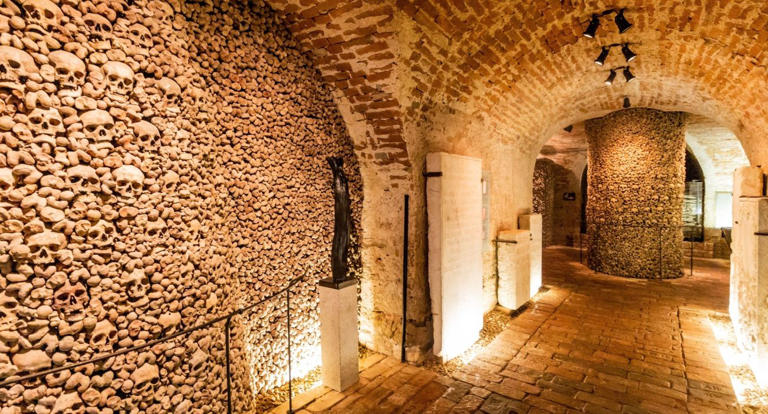
%20(3).png?w=auto&h=400)
Things to Do Near Catacombs of Paris
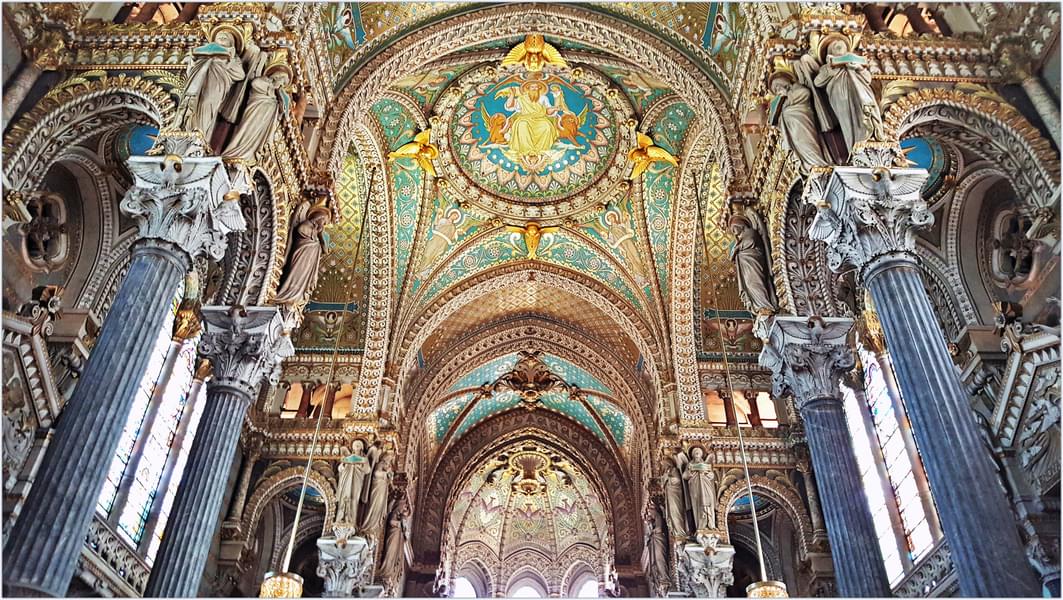
The Sainte-Chapelle is widely regarded as a work of art. In the Gothic architecture, the building houses relics from the crucifixion of Christ, and watching them is one of the most enlightening things to do near Catacombs of Paris. On the first floor, you'll see a beautiful 15-metre-tall stained-glass window, topping it all off are the 600-square-metre-plus stained glass windows that adorn the building's second floor. The stained glass in Sainte Chapelle only features one colour, a deep blue, and 1,113 stories from the Bible are displayed on each pane.
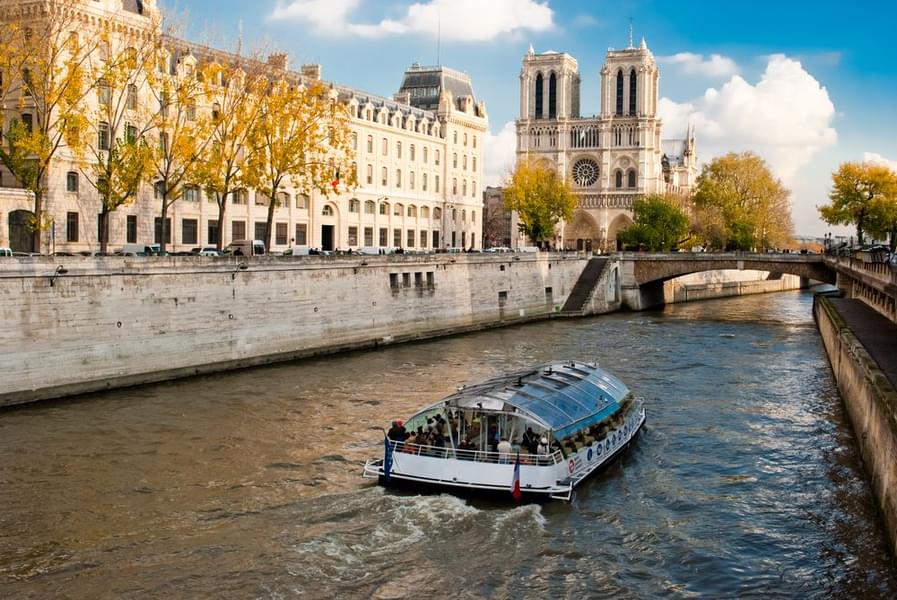
One of the most popular things to do near Catacombs of Paris is taking a Seine River Cruise . On these short Seine River excursions, you may see several of the city's most famous landmarks, including the Louvre, the Eiffel Tower, the Museum of Fine Arts in Paris, and Notre Dame de Paris, all while floating peacefully down the river. From the river's vantage point, you may get a good sense of the city's past, present, and future development and architecture.
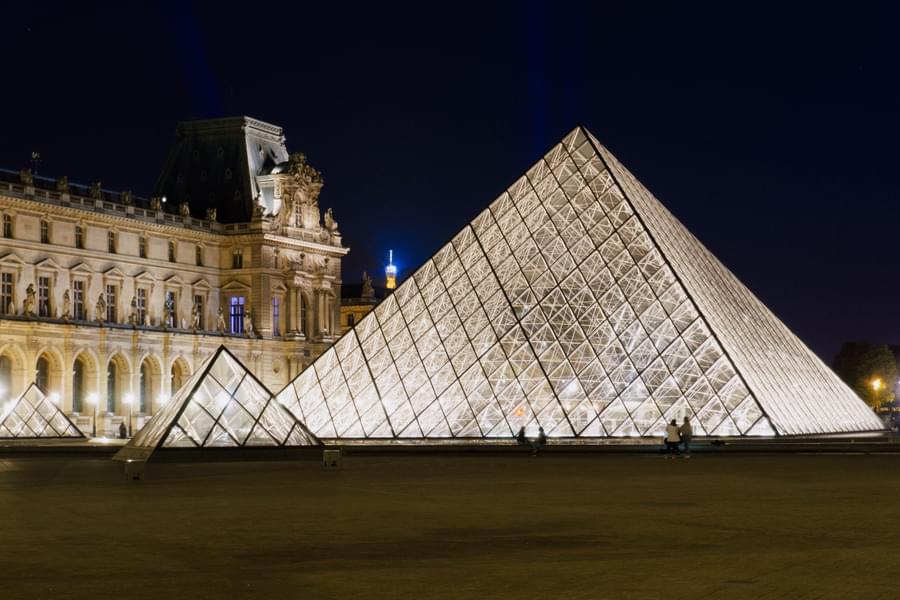
Visiting Louvre at Night is one of the things to do near Catacombs of Paris to ensure that you don't miss any of the masterpieces. The Louvre museum is one of the world's most famous museums, and visiting it at night is an excellent way to see it. Once you've entered the Louvre, you'll understand why it's so popular, and because it is illuminated, the sculptures have a distinct atmosphere than when they are not lit up. Seeing the glass pyramid outside the museum's main entrance illuminated up in all its magnificence is another perk of visiting the Louvre late at night.

On December 31st, 1985, Pierre Bideau, a lighting expert, and an electrician unveiled the 336 projectors, each equipped with a high-pressure, yellow-orange sodium bulb. There has been a nocturnal rejuvenation of monuments around France and the world thanks to this type of illumination, which has received universal praise.
One of the most stunning things to do near Catacombs of Paris is to see the beams of light illuminating the structure from the bottom up. Until the Tower was permanently closed to the public in 2009, they replaced the 1,290 functional projectors that lighted it from the outside, showcasing the exquisite metallic framework of the monument and lighting up the areas utilised by late-night visitors.
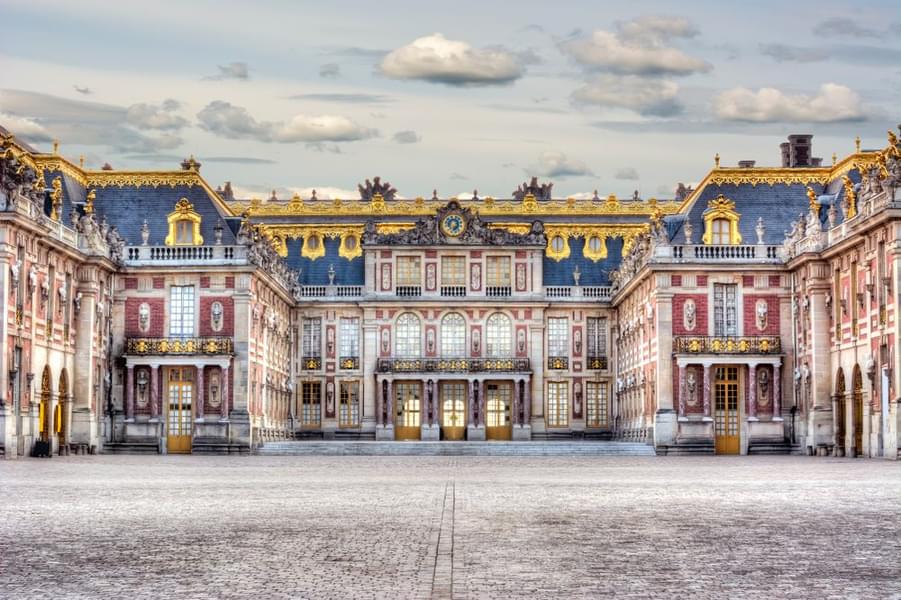
If visits to Napoleon's tomb, the Louvre, and the Eiffel Tower haven't fulfilled your thirst for French history, a trip to the magnificent Palace of Versailles is definitely one of the most satisfying things to do near Catacombs of Paris. Accessible in a day from Paris, the massive estate is every bit as impressive as one would expect from the former royal residence.
The chateau was constructed in the 1600s as Louis XIII's hunting lodge and is now recognised as a UNESCO World Heritage site. Visitors flock there to see the palace and gardens, which have become major draws. When here do not miss out on The Gallery of the History of the Palace and the Hall of Mirrors as these two are crowd favorites.
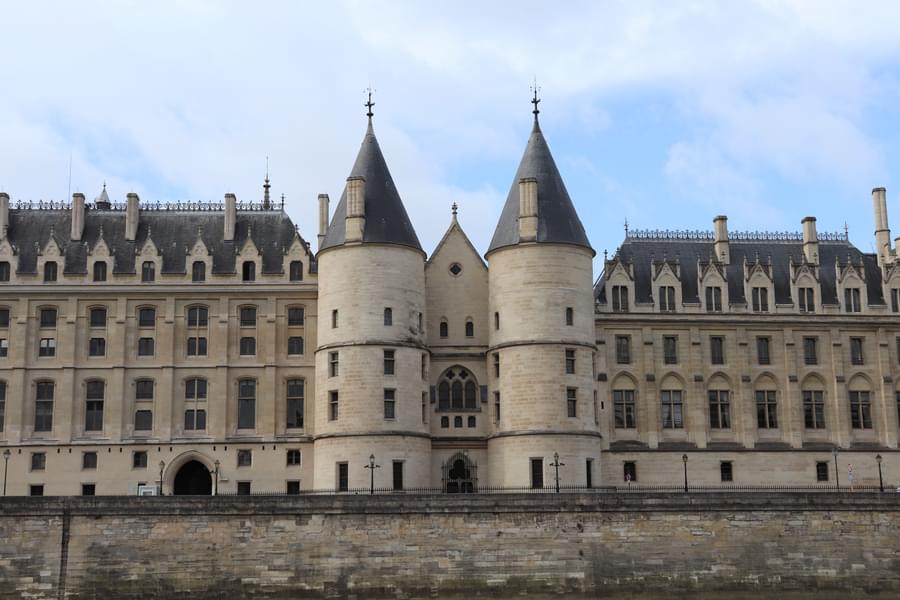
Originally constructed between the 10th and 14th centuries as a palace for the French royal family and the location of the French parliament, the Conciergerie was converted into one of the worst prisons of the time in 1392. The prison was given the French word for housekeeper's quarters, "conciergerie," because that's who was responsible for the building while the king was away. If you have free access to the Conciergerie, learning about the inhumane treatment of people who were held there as they awaited execution at the Place de la Concorde, is one of the knowledgeable activities to do near Catacombs of Paris.
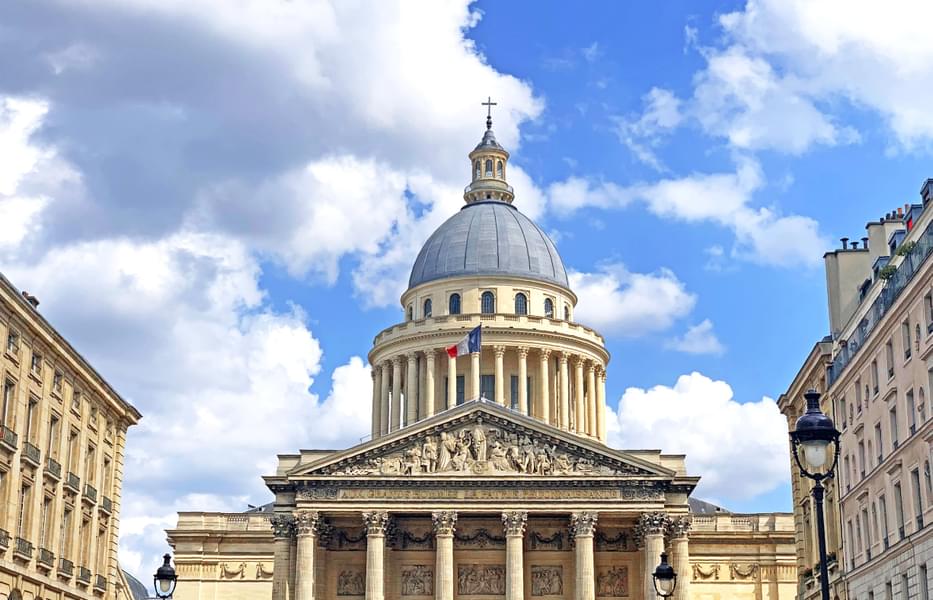
The Panthéon Paris is topped by a tall dome at the crossing and four smaller domes in the shape of saucers, each of which is capped by a sloping roof. This building's exterior is constructed by a portico with Corinthian columns and a triangular pediment at the end of the eastern wing. Discovering the building's mosaics and murals depicting pivotal moments in French history is one of the unique activities to do near Catacombs of Paris.
Also Read: Book Eiffel Tower Tickets

At one time, the Dôme des Invalides served as the church where King Louis XIV held a royal mass, and later, it contained the Tomb of Napoleon I during the nineteenth century. It also served as a safe haven for Allied pilots during World War II. One of the greatest activities to do near Catacombs of Paris nowadays is to learn about the different uses that this location has served over the years.
Must Checkout: Palace of Versailles Cheap Tickets
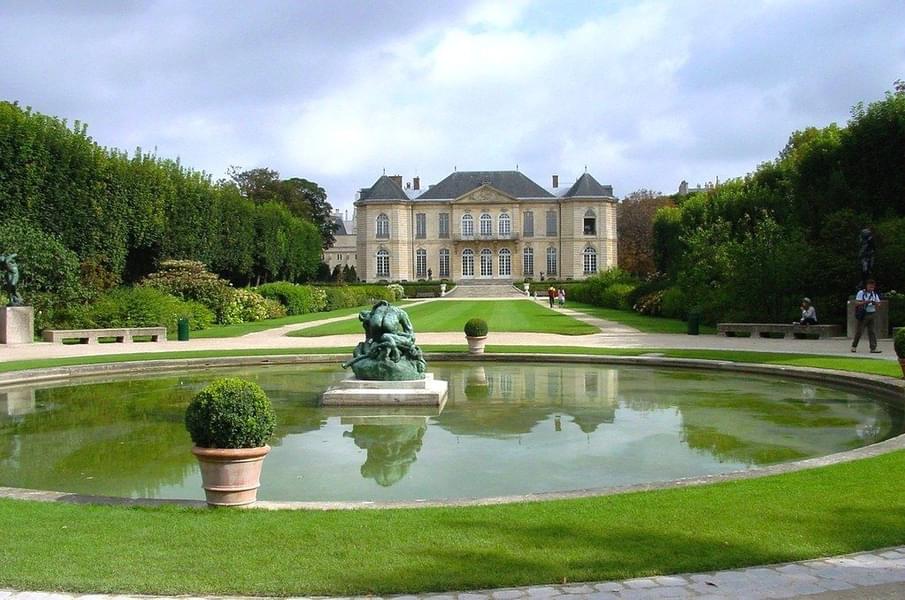
The Rodin Museum in Paris is a collection of works by a French sculptor, Auguste Rodin, whose work may be found on the city's streets. In addition to its central Paris position, the Rodin Museum's two locations offer it a spectacular presence in the suburbs.
This museum, which houses huge numbers of drawings, iconic pictures, historical sculptures, and other revolutionary pieces of art, is a must-see for any visitor to Paris. Both of the museum's venues have well-lit interiors, with beautiful ornaments strewn about. There are works of art by famous artists including Vincent Van Gogh and Pierre Auguste on show here. Whether you are interested in art or history, one of the essential activities to do near Catacombs of Paris is visiting the Rodin Museum if you are touring Paris.
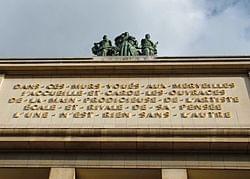
The new museum, which opened in 2015 after a major renovation, is a one-stop-shop for learning about human history and cultural development. It features exhibits on prehistory, biological anthropology, and cultural anthropology, as well as a research centre, educational programmes, and a training academy.
The goal is to learn more about who we are as humans, where we came from, and how we fit in with the rest of the animal and plant kingdoms so that we can better adapt to the world of tomorrow. Cro-Magnon man fossils, the Venus of Lespugue figurine from the Palaeolithic period, wax anatomical models, and much more await your discovery at the museum. The prehistoric and anthropological treasures in the Musée de l'Homme are unparalleled and witnessing them is one of the best things to do near Catacombs of Paris.
Must Checkout: Book Eiffel Tower Tickets
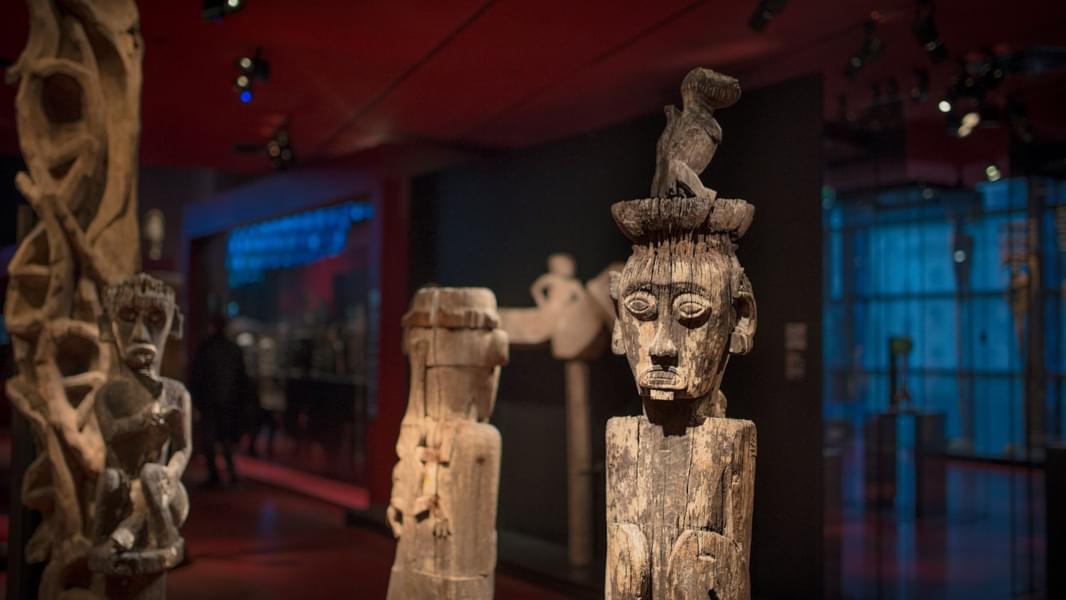
If you're tired of looking at paintings and sculptures from Europe then taking a rest in the Musée du Quai Branly is one of the best things to do near Catacombs of Paris. The museum's four main departments, Oceania, Asia, Africa, and the Americas, provide a comprehensive and awe-inspiring survey of indigenous and regional art from throughout the world and serve as a monument to the richness of human civilization. Masks, carvings, swords, jewellery, and more make up the bulk of the extensive collection, which is shown in a delightfully nontraditional setting, devoid of rooms and tall walls.
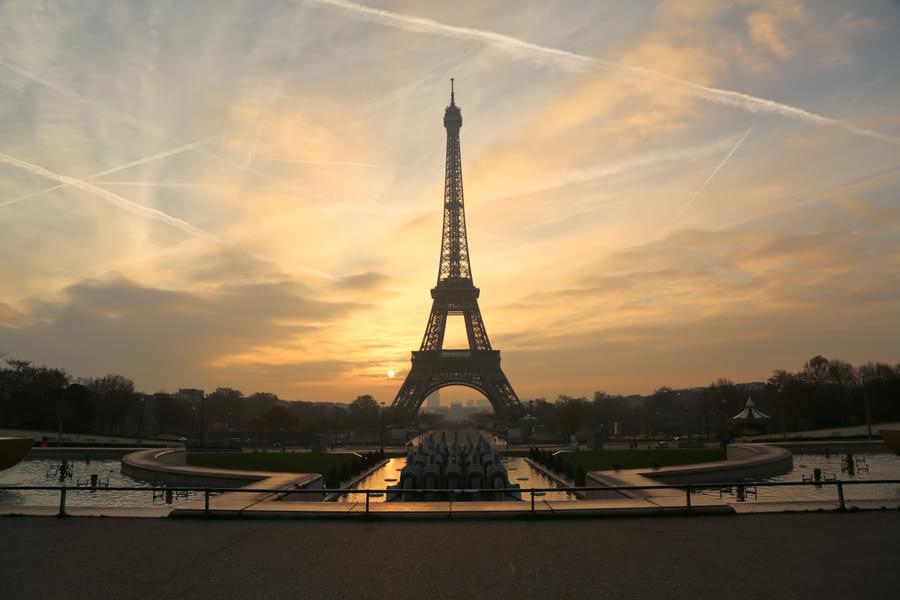
Trocadéro is the best site in Paris to see the sun rise. At this particular vantage point behind the iron structure, sunlight is reflected off the Iron Lady in a rainbow of hues, making for stunning photographs, and snapping the best photographs here is indeed one of the best things to do near Catacombs of Paris. Another major reason to visit Trocadéro early in the morning is that the number of visitors are significantly lesser than they are after sunset, making it possible to capture spectacular images of Paris.
Are the Paris Catacombs worth visiting?
Yes, the Paris Catacombs are totally worth visiting because they have attracted and enthralled people for centuries, and they now stand as a testament to Paris's history.
Why is the Sainte-Chapelle famous?
The stained glass windows of the Sainte-Chapelle are what bring the most attention to the building. Indeed, the chapel houses the world's largest collection of stained glass from the 13th century.
Why was Sainte-Chapelle created?
The Sainte-Chapelle de Paris, officially referred to as the Sainte-Chapelle du Palais, is a church on the Ile de la Cité in the centre of Paris that was constructed specifically to store Christian artefacts such as the Crown of Thorns and a portion of the True Cross.
How often do the lights twinkle on the Eiffel Tower?
Every night at sunset, the Eiffel Tower is illuminated for 5 minutes on the hour by its beacon lights, which provide a golden glow over Paris.
Why is the Louvre Museum famous?
When it comes to art collections, the Louvre Museum is unrivalled in scale and prestige. There are works of art and artefacts in the Louvre's collection that span 11,000 years of human history and civilization, making it one of the world's richest collections.
What are famous paintings located in the Louvre Museum?
Choosing just 20 masterpieces from the Louvre's collection of 460 is no easy task. But, the most famous paintings that you can find here are- oil paintings of Mona Lisa by Leonardo-Da-Vinci, Veronese’s The Wedding at Cana, and Théodore Géricault’s The Raft of the Medusa.
Who built the Palace of Versailles and why?
Louis XIV built the Palace of Versailles. Schmidt argued that Louis XIV's absolutist style of governance and ideals about the monarchy were fundamental to the construction of this extravagant complex.
Why visit the Palace of Versailles?
A trip to the Palace of Versailles is a necessity if you want to see the extravagant manifestation of regal influence and power that never ceases to amaze. It's a popular tourist destination in the City of Lights, and it sheds light on the opulent lifestyles of past French rulers and provides a fascinating window into the country's past.
How long is the wait for the Catacombs of Paris?
Visitors should plan to spend at least an hour in line during non-peak times of the year and up to three hours during peak holiday seasons. So, if you want to avoid waiting in line, you should get your tickets in advance.
Can you take pictures in the Paris Catacombs?
Yes, you can take pictures in the Paris Catacombs. Even though you can't touch the artefacts or make drawings of the inscriptions, you can take as many pictures as you like inside the catacombs.
Explore Paris
- Attraction Tickets
- Museum Tickets
- Theme Parks
- Travel Guide
%20(3).png?w=auto&h=400)
The content and images used on this site are copyright protected and copyrights vests with the respective owners.

IMAGES
VIDEO
COMMENTS
The Paris Catacombs. A veritable labyrinth in the heart of underground Paris, the Catacombs were installed in the tunnels of former quarries. Please read before you visit. Practical informations. ... 4 reasons to visit Catacombs. Twenty meters underground in a maze of galleries, visitors will discover an ossuary containing the remains of ...
Contact Details & More Info. Visit this page at the official website for more information on conditions and rules for visiting the catacombs, including current health and safety guidelines and up-to-date admission prices. You can write with any inquiries at this address: [email protected].
When you Plan your visit to the Catacombs of Paris, you can reach the attraction via a metro ride. You can avail the metro lines 4 and 6 and get off at the Denfert-Rochereau station, in the south of Paris, from where the Catacombs are located a short walk away. By RER. You can also visit Paris Catacombs by taking the suburban train line RER B ...
The Catacombs of Paris (French: Catacombes de Paris, pronunciation ⓘ) are underground ossuaries in Paris, France, which hold the remains of more than six million people. Built to consolidate Paris's ancient stone quarries, they extend south from the Barrière d'Enfer ("Gate of Hell") former city gate; the ossuary was created as part of the effort to eliminate the effects of the city's ...
How to visit the Paris Catacombs. The catacombs of Paris are old limestone mines—the materials were used to create some of Paris' most iconic buildings above ground. Photo by Alex Guevara/Shutterstock. The full-rate ticket price is 29 euros (around US$32), with last-minute tickets priced at 15 euros (about US$17).
What to See in the Paris Catacombs. Now we tell you what the most interesting points to see inside the catacombs of Paris are. The Sign Arrête, c'est ici l'empire de la Mort "Arrête, c'est ici l'empire de la mort" is an inscription in French meaning "Stop, here begins the empire of death".
How to Visit the Catacombs. To get to the Catacombs of Paris, you can take the subway and the RER to Denfert-Rochereau or use Bus 38 and 68. The museum is open Tuesday-Sunday from 9:45am-8:30pm (closed Mondays). The number of visitors is limited to 200 at a time so the line can get really long.
The catacombs are buried deep underground and the depth of the tunnels is roughly the height of a 5-story building. To visit the Paris Catacombs, you'll have to walk 131 steps down to the tunnels and climb 112 steps to exit. At the entrance, you'll see the famous sign Arrête, c'est ici l'empire de la mort!, which means "Stop! This is the ...
The entrance to the Paris Catacombs is located just outside the Denfert-Rochereau metro stop. At the end of your visit, you will exit at 21 Bis Avenue Rene-Coty. Opening Hours: The Paris Catacombs are open Tuesday through Sunday from 10:00 to 8:30 pm. The last entrance is at 7:30 pm.
Follow the Catacombs of Paris guide and visit the place a little early to get ahead in the line. You also book online slots to entirely skip the queue and enjoy the benefit of deals and discounts on your ticket . A good chunk of visitors are unaware that millions of bones are in the long strip of tunnels of the Paris catacombs.
If you'd like to visit the Catacombs in Paris, read the following article. It contains all the important information you need. Paris Catacombs: an original tour of the underground tombs of Paris. The Catacombs of Paris are an exploration beneath the city's streets, taking you down into the capital's dark but fascinating history.
Location: 1, Avenue du Colonel Henri Rol-Tanguy (place Denfert-Rochereau), 75014 Paris. Opening hours :Tuesday to Sunday from 9:45 AM to 8:30 PMThe Catacombs of Paris are closed on Mondays and certain holidays including January 1, May 1, and December 25. This is a one way circuit that runs for a kilometer and a half and exit is at 21 bis ...
The Catacombs of Paris are a labyrinth of tunnels and tombs that date back to the late 18th Century. The Catacombs are underground and one of Paris's most popular tourist attractions. More than six million people visit the Catacombs each year. The Paris Catacomb Tour will take you through artfully positioned skulls and skeletons along the ...
Before you visit the Catacombs of Paris it is important to be aware of the temperate inside the Catacombs is cold, and has a constant temperature of around 57°F (14°C) year round. I highly recommend that if you are the type of person who gets cold easily to pack a sweater, even if you visit during the summer months. ...
If you take either metro line 4 or 6, it will get you to the Denfert-Rochereau metro station. You will find the Paris Catacombs a few steps away from the exit of the metro. Alternatively, if you prefer using a bus, I would advise you to take either bus line 38, 68, 88, or 216.
Today, the visible part of the catacombs is just over a kilometer long. The remains of almost 6,000,000 people are carefully stored in the catacombs of Paris. Photo: dépositphotos.com . What can you visit? To enter the catacombs, you have to climb down a hundred or so steps, covering 1.7 km of gallery for a total of 11,000 M2 . Beware, the ...
How to Visit the Catacombs of Paris. To get there, you can take the subway and the RER to Denfert-Rochereau. Alternatively, you can use Bus 38 and 68. The museum is open from Tuesday to Sunday from 10 am to 8:30 pm. The queue can be frustratingly long, so reserve a spot online or by getting there early. Tickets come with discounts.
Access the virtual visit of The Catacombs of Paris Purchase the virtual visit in full-length. Tour Offers. Online Resources. Partager sur Twitter; Partager sur Facebook; Tous les musées ... Paris Musées ! Discover the collections of all City of Paris museums. Explore the collections of all City of Paris museums. Voir le site de Paris Musées.
The Sedlec Ossuary in the Czech Republic features works of art made from human bones and is part of the oldest Cistercian monastery in the region. The catacombs of Paris are home to an ...
Take A River Seine Cruise. One of the most popular things to do near Catacombs of Paris is taking a Seine River Cruise. On these short Seine River excursions, you may see several of the city's most famous landmarks, including the Louvre, the Eiffel Tower, the Museum of Fine Arts in Paris, and Notre Dame de Paris, all while floating peacefully ...